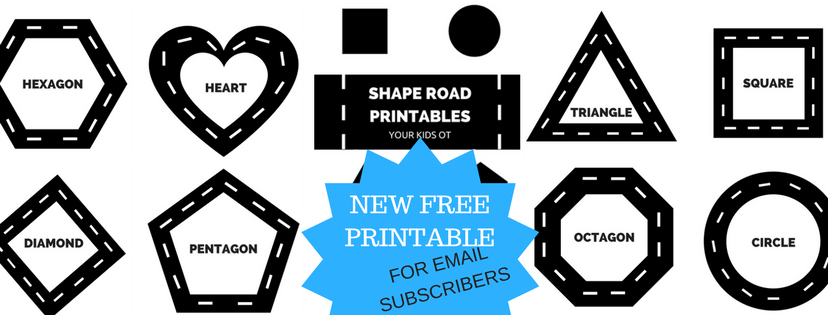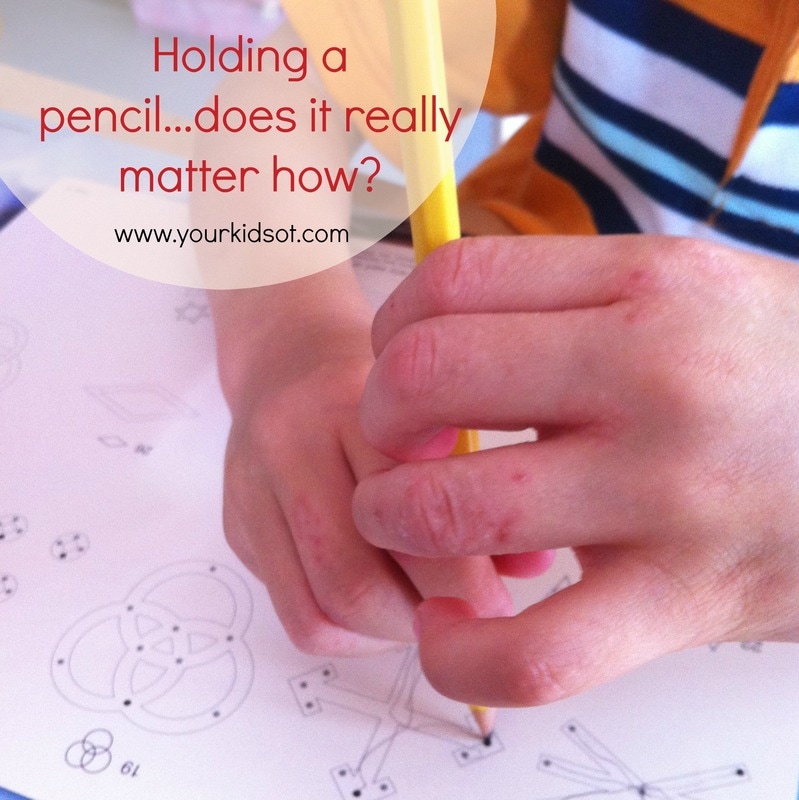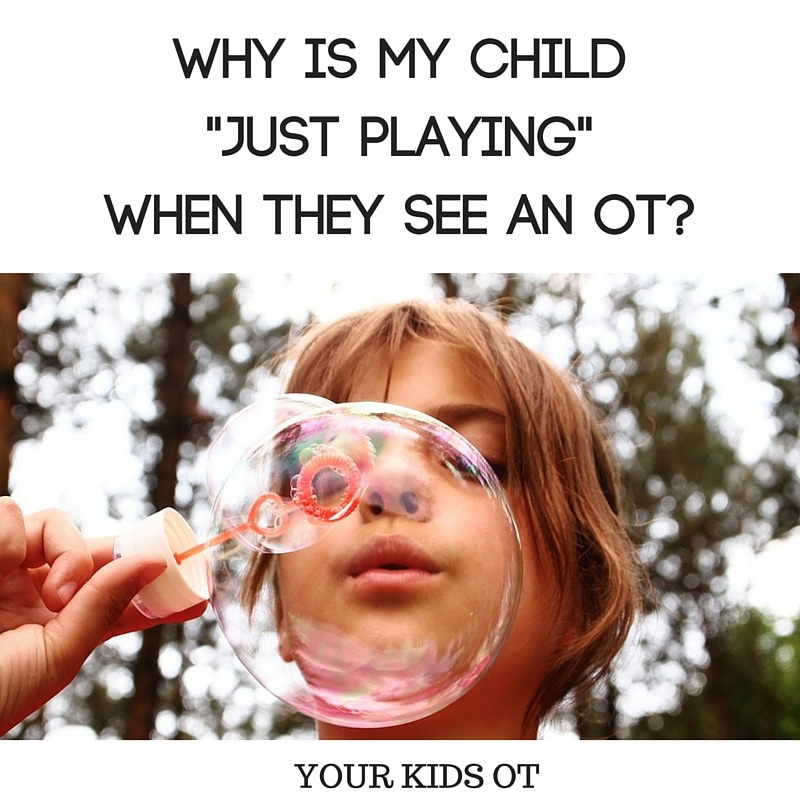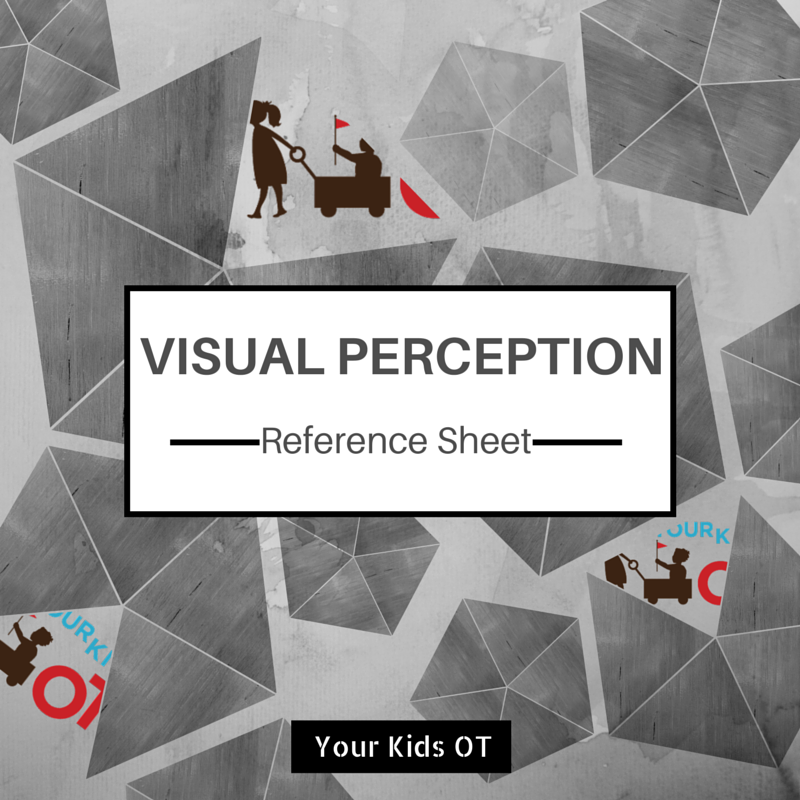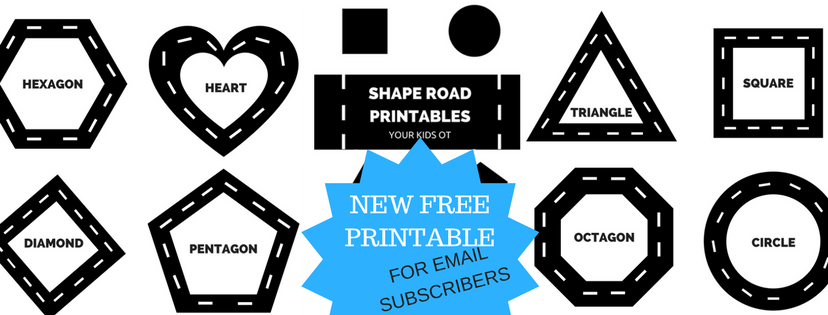|
You have tried everything to encourage your child to eat.
"Kids eat when they are hungry, right?" Why does your child eat some things and not others? I'm so excited to welcome, Simone Emery to Your Kids OT today. Simone is a feeding specialist and writer at Play with Food. She is a nutritionist with a Masters of Food Studies, an accredited Food Safety Supervisor and trained in the SOS Approach to Feeding. I've asked Simone to answer some frequently asked questions to help with feeding challenges in the home! Welcome Simone!
Simone, can you please tell us about your family and how you came to create your website "Play with Food"?
I started "Play with Food" as a way to help children get positive experiences with fruit and vegetables. This led to further training in feeding therapy for me to ensure my programs and writing helped parents understand the complexity of feeding children. The root causes of fussy eating vary significantly and my focus on sensory, language, variety and strategies is helpful for parents that may have heard unhelpful advice like "they will grow out of it" or "she won't starve". I have two little girls and I know the trenches of feeding kids, thinking about variety and meal planning around busy modern life. Many children shows signs of being "fussy" at times with food. What are some "red flags" parents should look out for in knowing when their child needs help? It is definitely always important to check that children are reaching their feeding milestones. One of the main red flags that parents report to me are having a dietary repertoire of under 20 foods, dropping entire food groups and anxiety around food. What is the SOS approach to feeding and main principles in this approach? SOS approach to feeding addresses the whole child, their physical, oral motor, sensory, digestive and psychological needs when it comes to feeding. It is an approach that works on increasing exposure to improve acceptance and then increase dietary repertoire / quantity. It is a life skill building therapy. Should I hide vegetables from my "fussy eaters"? Yes and No. Never deceive a child by being sneaky on purpose as this can breed distrust of foods you make them. They will know. But at the same time, you need to present vegetables in logical ways that increase the amount of times you can offer them. Eg. Zucchini slice for lunch, bolognese with carrot onion & celery, Carrot cup cakes. As parents we are in charge of offering and variety and nutritional range are part of what we offer. How do parents negotiate a "fussy eater" with other siblings? Making sure we don't single out a child is very important in reaching a family goal. A family has the goal of eating the same things, so, to achieve that goal we work on it together. Serve foods from the middle of the table so everyone has equal opportunity to learn. Make sure everyone can succeed and learn. Eating isn't a pass or fail task. There are many learns kids have to make before they may eat something new. Modelling the learning process is so important. What support do you provide parents of "fussy eaters"? I have a range of blog posts, recipes, videos, an eCourse and private Facebook group to help parents. I also do guest speaking, consults and Skype sessions.
Thanks so much Simone for sharing your experience and expertise! She is a wealth of knowledge and information. I love how Simone's advice is always practical and based on her professional training.
FIND OUT MORE:
Do you have a fussy or picky eater?
Affiliate links may be found throughout this website in advertising. This means that if you follow through with a purchase from these links, Your Kids OT will receive a percentage of the sale.
You may also like:
Today I would like to introduce the lovely Fi Morrison from "Mumma Morrison" as a guest blogger to Your Kids OT. Fi is a mother to a gorgeous baby boy (check out her Instagram feed to meet her bub) and a primary school teacher. I recently discovered that Fi taught one of my nieces a few years ago! My niece LOVED being in Mrs Morrison's class! Today Fi is helping us with 5 ways to promote social skills with children! This is a timely article with the recommencement of school here in Australia! Thanks so much Fi for writing this article!
I was sitting in my classroom next to Bryan* and Charlie*, helping them with their maths task, when Bryan snatched Charlie's pencil. Charlie started pointing the finger, crying and yelling, saying Bryan had stolen his pencil (which I obviously knew, because I was sitting RIGHT THERE).
Unfortunately, this is a common occurrence in my life as a teacher, and I'm sure it sounds all too familiar to parents and teachers everywhere. What do we do with those children who fight and bicker, who haven't learnt to share or turn take, and overall drive us bonkers with their antisocial antics? (My pet peeve is dobbing. I had students who would say, “SHE LOOKED AT ME” and it would drive me up the wall!). I think many parents, and teachers, assume that social skills are inherent within children, but it is just not that simple. Social skills, like the majority of other skills, need to be taught to children and reinforced. While practice might not make perfect, it surely does make progress. If you have been struggling with social issues with your child at home, or in a social or educational setting, these activities can help to improve their social skills and teach them the right way to deal with particular issues. Social stories Social stories are particularly used by educators for students with ASD (Autism Spectrum Disorder). It is a visual story that describes certain situations or scenarios a child might encounter, and the best way to respond. It is one of the easiest and most effective ways to teach children social skills at home, because it is through the medium of story telling (a family favourite!) that the skills are reinforced. For example, I had a year 2 student, Stacey*, in my class last year who had ASD and Anxiety. To support her transition to year 2, we created a social story by taking photos of our classroom, her peers, meeting spots and play areas around the school for her to be acquainted with, then bound the book into her social story. You could do something similar for a social situation your child struggles with. Take a photo of the situation in the wrong way (for example, pushing someone) and of the right way (standing next to each other, talking). Write captions for the story about the wrong way and the right way (I will not push someone if I don’t like what they say. I will stand next to them, talk to them and say ‘I don’t like what you said’). For older children, you can turn this into a learning activity and create the story together (which goes hand in hand with role plays, see below).
Role Play
Role playing a situation can be a powerful way for your child to understand how someone might react to a situation. For example, if the situation was ‘Someone has said something mean to you’, work through the situation with your child the wrong way (what shouldn’t we do) and the right way (how can we react to that situation). By getting your child to physically act out and verbally respond to each scenario, and playing off the responses you give, your child can see the impact of their words and their actions on other people. With role playing, however, you will need to be mindful of how you act out certain scenarios. Children might find some scenarios hurtful (such as saying something mean), and you don’t want it to escalate out of control. This might give you a lot more teaching than you were expecting! As a teacher, we need to be mindful about the scenarios we ask children to roleplay (for example, peer pressure to do certain things), however it is a helpful medium for children to develop their social skills and understand how their actions and responses affect others. Social Circle This activity works well with a group of children, and was taught by our Learning Support teacher at school. Children would sit in a circle, and the teacher would ask the children a question about a social scenario (e.g. If the teacher is talking to another student and you want to ask them a question, what do you do?). To monitor the discussion, the teacher would use a soft toy as the ‘talking’ prop, and whoever had the prop could answer the question. The social circle was a great way to promote discussion between peers, bounce ideas off one-another, and extend their thinking in different ways. Puppets Puppets are absolutely by far one of my favourite educational (and play!) resources ever! They are super fun, engaging for children and can promote learning. I used to run puppet workshops for gifted and talented children, and social skills was one of the biggest benefits I would promote for children who attended the workshop. Similar to role playing, puppets can be used as an engaging way to act out certain scenarios for children to respond to. However, puppets have two extra benefits:
Explicit discussion and modelling
As parents and teachers, we should never underestimate the power of a simple explanation from an adult and our own role modeling of the correct response.I would always reinforce this with posters in our classroom to remind the children after our conversation. For example, with our dobbing situation, I sat the children down and spoke about when was an appropriate time to speak with me (if someone was hurt or in danger) and when there was a situation they could resolve themselves (someone using the wrong book for class work). After this, I modeled for them how the children could approach me about a situation, and then reinforced it with a display in the classroom. Social skills are vital for children to learn to help them in a variety of social situations. By teaching and practicing these skills at home, as well as in educational settings, your child will develop the necessary social skills to participate in a variety of social settings both during childhood and beyond. Have you found other ways to develop your child’s social skills?
You may also like:
We are going to be late! Hurry up! I can't do this button up! I can't! Put on your jacket, it's cold out! I can't do the zip! I can't! The morning rush out the door to get to school can often be a struggle. Getting dressed can be a chore and then there are fastenings on school bags to manage too! This month in the "Functional Skills for Kids" Series, we look at helping kids with fasteners such as buttons, zippers, snaps (press studs) and more! My blogging colleagues will look at fine motor, gross motor, visual perceptual and sensory motor considerations. We will also cover when we should expect our kids to manage these tasks and how to incorporate this learning in play. Find the links for these articles below!
So it is time for your child to learn how to manage fastenings on their own but where do you begin? It helps to have an understanding of the steps involved with each of these tasks. I have outlined the steps involved in managing common fastenings here through visual photo sequences. For your printable copy of these sequences, download them HERE!
Once you know the steps involve there are a few tips in teaching your child how to manage these fastenings. (Actually these tips apply to teaching your child most new tasks!)
These are tips occupational therapists use all the time!
generalization of the skill (eg. zipper on dress, zipper on bag, zipper on pencil case, zipper on doll's skirt). 9. Reinforce and reward - We would like our kids to have intrinsic motivation to manage fasteners independently! Many children do desire this independence and often "force" it upon their parents too early with "I can do it myself!" Some children, however are not so intrinsically motivated. They stubbornly refuse to get dressed or insist on a parent helping them. For these children praise and reward are important to encourage desirable behavior. Often these kids benefit from a "backward chaining" approach discussed earlier. Rewards may include verbal praise "Great job!" or "You did it!". The reward may include letting your child choose their preferred outfit to wear or a sticker. A side note about rewards:
Is your child struggling with fasteners? Have you tried these tips?
This post is part of “Functional Skills for Kids: 12 month series by Paediatric Occupational and Physical Therapists”. You can read all of the childhood functions HERE. Read all Your Kids OT’s monthly posts HERE.
Find more information about “helping kids with fasteners” from other Occupational and Physical Therapists participating in the “Functional Skills for Kids series”:
When Can Kids Learn to Button and Zip? | Mama OT
Clothing Fasteners and Fine Motor Skill Development | Kids Play Space Clothing Fasteners and Gross Motor Skill Development | Your Therapy Source Inc How to Adapt Buttoning and Zipping for Your Child | Miss Jaime OT Learning How To Use Buttons, Snaps, Zippers, and Buckles Through Play | Growing Hands-On Kids Tips to Teach Kids to Zip and Button | The Inspired Treehouse Pinch. Poke. Snap... Helping Kids to Manage Buttons, Zips and More! | Your Kids OT Clothing Fasteners and Sensory Processing | Sugar Aunts The Visual Motor Aspect of Buttons and Zippers | Therapy Fun Zone
"Open your mouth, here comes the plane!"
I'm having flashbacks to my young daughter and trying to bribe her with yoghurt to eat her dinner. Oh the things I tried. Oh the stress I placed on myself! Oh the stress I placed on her! Have you ever tried to coax your child to eat? It can be so STRESSFUL! Have you ever had to stop your child from over-eating? It can be so STRESSFUL! Join me this month in looking at meal times! I'm joined by my therapy blogger colleagues in the "Functional Skills for Kids Blog Series". There are heaps of tips and tricks to help your little ones at meal times with the links below. I wish I had read these articles as new parent. I wish I could tell first-time-parent-Cindy some of the things in this article! Here are 4 ways to modify meal times for your FUSSY eater!
1. ALTERNATIVE CUTLERY
(a) Cutlery with built up hands allow for easier grip for those with fine motor difficulties. Bendable necks of cutlery can help to angle the metal part so that the child (or adult) has more success with independent eating. Try Good Grips Utensils with built up handles. Read more about FM skills at meal times with Therapy Fun Zone's article HERE. (b) Shallower spoons are particularly good for kids with a strong gag reflex. The spoon does not need to be inserted too far into the mouth and the food comes off more easily. Try Gerber Graduates Spoon. (c) Weighted cutlery can help those who are experiencing difficulties with body and spatial awareness as well as sensory registration. Try Good Grips Utensils Weighted set of 4. (d) Chopsticks with training loops provide a guide for finger placement. Try Edison Chopsticks with right hand Minnie or right hand Mickey or left hand bunny. Some kids enjoy the novelty of picking food up with chopsticks. These are also great for working on hand strength and a tripod grasp too! I love using these chopsticks in OT (and not for meal times)! Read about thisHERE. (e) Novelty cutlery is everywhere on the market . You can find planes, bulldozers, block figures andvarious characters, etc! Kids enjoy using novelty cutlery as it brings a playful element into an every day activity. Read also how you can adapt regular cutlery withSugar Aunt's article here.
2. DIVIDED PLATES, BOWLS AND LUNCH BOXES!
Divided plates, bowls and lunch boxes are a great way to help fussy eaters. They allow you to separate food into portions. You may still present the food that they refuse and gradually encourage mixing foods from different sections. Remember that it often takes multiple presentations of the same food before a child will try something new. It is also okay if they don't eat it! Keep presenting it and don't worry! In a practical sense, divided plates, bowls and lunch boxes also keep wet foods separate from dry. There is a huge range of tableware on the market. You could try these:
For lunch boxes, you could try these:
Divided plates, bowls and lunch boxes can help kids who -
3. REGULAR ROUTINE
Establishing regular eating times and habits help children with meal times. It doesn't have to be regimented, however if meals are always around the same time of day; then your child will develop a natural circadian rhythm (natural body clock). They will begin to feel hungry at the same time of day. This will also help kids to sleep better! Establishing a family routine of setting the table, sitting, eating, talking, packing away... help children who have difficulty with transitions, creating stability and order. It can help children to understand the beginning and end of the "activity". Children also learn by example. As they see you trying new food, they want to follow. Sometimes the food on your plate might be more appealing than what they are eating. Some children prefer to feed themselves, whether that be finger food or with cutlery. Encourage this! Although it can often be quicker to feed young children yourself, this will pay off in the long run.
4. HIDDEN VEGGIES!
For or against? There are two philosophies around disguising vegetables in other food. Some people stress the importance of teaching kids a knowledge of "farmyard to plate". Teaching kids where food comes from and how it grows. Getting kids digging in the garden, planting seeds, watering and watching them grow! Some people consider hidden veggies a brilliant idea! Genius! Sneak them in so at least kids are consuming veggies where they might otherwise refuse if they "see" them. You can try these recipes with hidden veggies!
Why not try both philosophies simultaneously?
As a new parent wrangling with my firstborn, I wish I had known of some of these ways to modify meal times. The main tip I would tell first-time-parent-Cindy... was that it was going to be okay if she didn't everything but to keep on presenting it to her anyway. REALLY - it's okay if she doesn't eat it! Do you have a fussy eater? Have you tried hiding veggies? Does your child have a favourite lunch box or dinner ware? What is your best tip to help modify meal times? 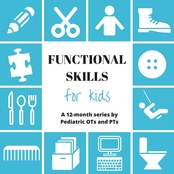
This post is part of “Functional Skills for Kids: 12 month series by Paediatric Occupational and Physical Therapists”. You can read all of the childhood functions HERE. Read all Your Kids OT’s monthly posts HERE.
For more information about “meal times”, read what other Occupational and Physical Therapists participating in the “Functional Skills for Kids series” have written:
When Can Kids Feed Themselves? (and other mealtime milestones) | Mama OT Fine Motor Skills For Mealtimes | Therapy Fun Zone Postural Control, Gross Motor Development and Mealtime |Your Therapy Source Attention, Behavior, and Meal Time Problems | Sugar Aunts 4 Ways to Modify Meal Times for Fussy Eaters | Your Kids OT Mealtime Skills, Rituals & Play - Nurturing a Love for Food | Kids Play Space 15 Tips for Picky Eaters | The Inspired Treehouse Positioning, Motor Skills, and Table Manners: What the Connection? | Miss Jaime OT Visual Perceptual Skills Needed for Independent Feeding | Growing Hands-On Kids 
Cindy is a registered Occupational Therapist practising in Sydney Australia. She has two young children who are a constant source of inspiration and learning. Cindy loves working creatively to help children to reach their potential, finding opportunities in everyday living and making learning fun. Cindy is the author of the occupational therapy blog Your Kids OT.
You may also find these affiliate links helpful...
Disclosure: Affiliate links are included in this article to promote products that I recommend. Your Kids OT is a participant in the Amazon Services LLC Associates Program, an affiliate advertising program designed to provide a means for sites to earn advertising fees by advertising and linking to Your Kids OT. Reviews and endorsements of products will only be made based on my expertise and personal opinion; and deemed worthy of such endorsement. The opinions shared in sponsored content will always be my own and not that of the advertising company or brand.
Tooth brushing is an important aspect of personal hygiene! This post is part of the "Functional Skills for Kids Blog Series" with a look at different forms of personal care. Make sure you check out all the great tips for hand washing, bathing, showering, nose blowing, hair cuts, sleep, screen-free quiet times as well as adolescent hygiene ..... at the end of this article!
~~~~~~~~~~~~~~~~~~~~~~~~~~~~~~~~~~~~~~~~~~~~~~~~~~~~~~~~~~~~~~~~~~~~~~~~~~~~~~~ Dentists worldwide including the America Dental Association and theAustralian Dental Association recommend that children brush their twice a day for two minutes at a time. They also recommend regular visits to the dentist, use of fluoride tooth paste and daily flossing. Both of these sites have great resources to encourage your kids to brush and floss! Occupational therapists help people to become independent in activities of daily living (ADL). We consider aspects of the activity as well as environmental demands to determine why a child might have difficulty achieving independence in a task. For babies and toddlers, we also consider why they may not want to participate in the task! Firstly we may consider the developmental expectations for tooth brushing and some tips to help with these stages.
Babies
Aim: Tolerating oral sensation of something in the mouth and tongue movement. Tips for helping babies:
Toddlers/preschoolers Aim: Tooth brushing and flossing by an adult and beginning to brush parts themselves Tips for Toddlers and Preschoolers:
School Age Children Aim: Independent brushing and flossing teeth. Tips for School Age Children
Children with special needs may have difficulty with specific aspects of brushing their teeth. Here are some further considerations for tooth brushing!
Fine Motor Considerations
Tips to Help with Fine Motor Skills
Gross Motor Considerations
Tips to Help with Gross Motor Skills
Sensory Considerations Touch/Proprioception:
Smell
Vestibular
Auditory
Oral/Taste
Tips to Help With Sensory Processing Skills Your child may benefit from an oral desensitization program as part of a sensory diet. This might involve increasing deep pressure to the jaw, lips, cheeks, tongue and mouth. Bundy, Lane and Murray (2002) recommend providing infants and young children with deep pressure to the roof of the mouth or gums with the therapist's fingers or other soft rounded object (eg. Nuk toothbrush). They also suggest that older children and adults may be taught to provide deep pressure to their own mouths using a variety of oral motor toys (eg. using whistle, biting on knotted rubber tubing, blowing on a rubber strip). The Paediatric Occupational Therapy Department from Abertawe Bro Morgannwg University Health Board (2014) describe a protocol of oral desensitisation. This includes the following progressive steps:
You may also like to try...
Attention and Behavior Considerations
Tips to Help with Attention and Behaviour skills
Additional Considerations
Tips to Help with these additional considerations
Do your kids like brushing their teeth? Have you downloaded your FREE tips sheet, checklist and reward chart?
Task Analysis - Independent Bathing in Children | Your Therapy Source
Tips and Tricks for Teaching Hand Washing with Kids | Growing Hands-On Kids I can brush my teeth! Tips for Tooth Brushing and Oral Care! | Your Kids OT Screen Free Quiet Time When Daytime Naps are History | Kids Play Space Tips to Help Kids Learn How to Blow Their Nose | Sugar Aunts Tips to Help Kids Who Hate Haircuts | Mama OT Sensory Friendly Tips for Kids Who Have Trouble Sleeping | The Inspired Treehouse Your Child With Special Needs: How to Conquer Showering Independently | Miss Jaime OT Adolescent Hygiene Challenges | Therapy Fun Zone
Disclosure: The information on this site is general in nature. The activities are safe for most children, however,
you should consult an Occupational Therapist or health professional to address specific movement, sensory or other medical conditions. This article does not contain any affiliate links.
References:
Shirt on, pants on, socks on, shoes on, hat on ... out the door. Dressing should be an easy every day activity but sometimes it is NOT! Sometimes there are sensory triggers which affect whether a child will or will not get dressed (or undressed)! Some of these sensory triggers for dressing are found below as well as some behaviours that you may see as a result: TOUCH
Children with touch sensitivities may have difficulty wearing certain clothing. They may become distressed or constantly pull/tug at their clothing. Some children will constantly touch or feel their clothing exploring the textures. They may refuse to wear new clothes or prefer to be naked. These children may have difficulty changing clothing within a day (eg. changing for swimming lessons, getting ready for bed, etc). Sometimes shopping for new clothes may cause stress as well as letting go of clothing that is too small. Children who are sensitive to touch may disregard weather and temperature cues when it comes to dressing. They may wear long sleeves in warm weather or shorts and a sleeveless shirt in winter. Some children will become extremely upset when their clothing is wet. PROPRIOCEPTION
Children who experience difficulty processing proprioception information may fall over whilst getting dressed and undressed. They may take a long time to get changed and appear lazy. These children may look "messy" when they have finished getting dressed. They may have clothes inside out or back to front. VESTIBULAR
Children who experience difficulty processing vestibular information may appear "restless". They may move about the room or wonder from one room to another whilst getting changed. They may make several changes in body position (stand, sit, lie on the ground, jump off furniture, etc). They may also fall over or roll around. Alternatively, these children may prefer to get changed whilst sitting or lying down (eg. on their bed, on the floor, on a chair). VISUAL
Children who experience difficulty processing visual information may take a long time to find clothes and get dressed. They may make limited clothing choices and have difficulty matching tops with bottoms (eg. understanding what "goes" together). Some children may have difficulty aligning rows of buttons with buttonholes or they may wear non-matching socks and shoes. AUDITORY
Children who experience difficulty processing auditory information may become distressed easily and make limited clothing choices. They may try to cover their ears during dressing or scream to block out other noises. They may prefer getting dressed in particular places (eg. bedroom not bathroom). They may take a long time to get dressed as they are easily distracted. SMELL/TASTE
Children who seek additional smells in clothing may be seen sniffing their clothes excessively. They may choose long sleeves or to hold their clothes so that they can bring these to their nose. Those who are sensitive to smells may become distressed easily and have limited clothing choices. Children who seek oral stimulation may chew their clothing or chew the fastenings on their clothing. They may also like to brush clothing across their lips or lick clothing. I have compiled this information about sensory triggers and behaviours into a single page printable checklist. Download your copy of this checklist HERE! SENSORY STRATEGIES FOR DRESSING 1. Be aware of your child's sensitivities and acknowledge their clothing preferences. There will be times where your child is required to conform with social norms (eg. wearing clothes rather than being naked in public, wearing a uniform to school, etc), however their may be times where there are less restrictions on what is worn and how it is worn. 2. Build a wardrobe of comfortable clothing for your child, avoiding sensitivities which may cause distress or anxiety if possible. This may include: -
3. Contact an occupational therapist who may work with your child on an overall sensory diet to assist with sensory sensitivities. Your occupational therapist will be looking at your child's arousal and activity levels, attention and impulsivity as well as their ability to regulate themselves. An occupational therapist may suggest activities such as:
Do you have a child who experiences sensory sensitivities during dressing? This article is part of “Functional Skills for Kids: 12 month series by Paediatric Occupational and Physical Therapists”. You can read all of the childhood functions HERE. Read all Your Kids OT’s monthly posts HERE. Find more information about “Dressing” and valuable strategies to help with important skill, read what other Occupational and Physical Therapists participating in the “Functional Skills for Kids series” have written:
When Do Kids Start to Dress Themselves? | Mama OT
Fine Motor Requirements for Independence with Self-Dressing | Sugar Aunts Gross Motor Skills and Independent Dressing | Your Therapy Source Sensory Considerations for Dressing! | Your Kids OT “Get Dressed!” How to Modify Your Child’s Dressing Routine | MissJaimeOT Teaching Kids How to Dress Themselves: Activities to extend skills | The Inspired Treehouse Improving Following Directions with Getting Dressed | Growing Hands-On Kids Visual Perceptual Skills in Dressing | Kids Play Space Work on Dressing Skills Through Play Activities | Therapy Fun Zone 
Cindy is a registered Occupational Therapist practising in Sydney Australia. She has two young children who are a constant source of inspiration and learning. Cindy loves working creatively to help children to reach their potential, finding opportunities in everyday living and making learning fun. Cindy is the author of the Occupational Therapy blog Your Kids OT.
The information on this site is general in nature. The activities are safe for most children; however, you should consult an Occupational Therapist or health professional to address specific movement, sensory or other medical conditions. This article does not contain affiliate links and has no association with the companies suggested in this article. Any items purchased are made at your own risk. References: Yack, E., Aquilla, P. and Sutton, S. (2015) Building Bridges Through Sensory Integration (Third Edition). You may also like:
Long before your child may be ready for potty training there are some important concepts that they should learn! These concepts include learning the difference between wet and dry, dirty and clean, front and back.
Teaching your child to count can be a useful way to measure time for your young child (eg. let's wash our hands until we count to 5). It is also helpful when encouraging your child to learn to sit down and you can slowly increase the number that you count to (slowly increasing their attention). When your child is ready to use toilet paper on their own, counting is helpful so they know the number of squares they can use (and to avoid whole rolls of toilet paper in the toilet)! It is also really important to teach your child about their own bodies...naming each body part correctly and finding where it is on themselves. This body schema helps with gross, fine and visual spatial awareness as well as body safety. They can learn about "private parts" that they don't show other people and be aware that others do not touch their private parts (and they don't touch others). This does not need to be in a fearful way but should be taught naturally and may be built on as your child matures. There are lots of great books that teach older children about body safety including "Some Secrets Should Never Be Kept". TEACHING WET AND DRY through everyday opportunities and play situations.
TEACHING DIRTY AND CLEAN through everyday opportunities and play situations.
TEACHING FRONT AND BACK through everyday opportunities and play situations. Teaching front and back is important when it is time to teach your child to wipe their bottoms independently. Use various items you have around your home to teach front and back, such as stuffed toys, books, toy planes and cars, CDs and even tins of food! (see photo) TEACHING TO COUNT through everyday opportunities and play situations. It is best to use physical objects or actions when teaching young children to count.
TEACHING BODY AWARENESS through everyday opportunities and play situations.
This article is part of “Functional Skills for Kids: 12 month series by Paediatric Occupational and Physical Therapists”. You can read all of the childhood functionsHERE. Read all Your Kids OT’s monthly posts HERE.
Find more information about “Potty training”, stop by to see what other Occupational and Physical Therapists participating in the “Functional Skills for Kids series” have written:
Potty Training Readiness: 10 Signs It’s Time to Ditch the Diapers | Mama OT
Potty Training, Toileting and Fine Motor Considerations | The Inspired Treehouse Gross Motor Skills and Toilet Training | Your Therapy Source Toileting and Sensory Processing | Miss Jaime OT Potty Training with Attention and Behavior Problems | Sugar Aunts Modifications For Potty Training | Therapy Fun Zone Preparing Your Child & Environment for Potty Training | Growing Hands-On Kids Potty Training Instruction Tips |Kids Play Space Teaching Concepts for Potty Training Through Play |Your Kids OT
You may also like:
Mr 5 is starting big school in 2 weeks time. He has his uniform, hat, shoes, lunch box....He is ready (even though I may be a bit emotional)!
Parents I speak with are often worried about how their child will cope with being at BIG SCHOOL! Their main concerns are usually social "Will they have anyone to play with?" "Will they sit by themselves at lunch time?" or sometimes about self care "Will they know when to go to the toilet?" Kindy teachers are fantastic at helping children settle into big school. They will take them for walks around the school so they are familiar with the buildings, they will introduce class mates to each other (repeatedly), they will schedule regular toilet visits and give lots of reminders about how to sit, raise their hand and interact with other children. As a parent there are a few things you can practise with your child in these few weeks before school starts to help the transition go smoothly. (1) Practise getting dressed - Let your child "dress up" and play in their uniforms at home. Don't worry about getting them "dirty" - that's what the washing machine is for! In fact after a few washes a brand new uniform will be less stiff and more comfortable for the first day. Encourage your child to practise fastenings such as zippers, clips, buckles and buttons. If they are struggling, show them patiently how to grasp and manipulate the fastenings. Sometimes children struggle with the fine motor coordination or using both hands together to manage fastenings. Practise now before the pressure of time hits on a school day! Choose fastenings where possible which promote success. If your child is not confident with tying shoe laces, don't worry they will get it! Buy the velcro shoes and save everyone unnecessary stress! (2) Practise getting food out (and not losing their lunch box)- There is nothing more stressful for a child than not being able to eat. Choose a lunch box which they can open and close independently. Check with your school if they need separate containers for fruit or morning tea. Make sure your child can open and close every container you plan to send to school. Label everything and help your child to identify their name and containers (especially if you have just bought them a new one). Use your containers on a picnic with your family and ask your child to identify which container belongs to them. If you send it packaged food such as biscuits, sultanas or poppers, practise opening these as well. Consider transferring things into zip lock bags or brown paper bags which are easy to open. Don't forget to practise opening and closing drink bottles as well if you want to prevent leakages through new school bags. (3) Practise saying good bye to you - Keep it short and sweet. Don't linger and don't show your emotional response (a pair of sunnies is a good idea) to seeing your little boy (or girl) starting school. You could role play this at home. Set your child up at a little table to do some drawing and say "goodbye" and physically walk to another room. You could even reverse this and your child could be the parent dropping off their child (you). Remind your child that you will come back! You could even arrange a meeting spot if you know where they will be at the end of the day (eg. I'm going to come and pick you up from your classroom.) (4) Practise social skills - Practise with people you meet at the park or friends you have visit. You could model for your child simple phrases such as "Hi, I'm Cindy, what's yours?" " Can I sit next to you?" "Do you want to play tip?" "I like your lunch box, I have Peppa Pig on mine". If possible arrange a play date with other kids from the same school either before school starts or in the first few weeks. Avoid asking "Who did you play with? Did you make any friends today?". Instead ask your child, "Can you remember who sat next to you in story time? Can you remember who was in front of you when you lined up to go into class?" Even if they can't remember initially, as your child learns the names of other children in their class, they will be able to tell you. (5) Practise sitting on the floor cross legged - Read books or play games at a low table with legs crossed. If your child isn't used to this position then it would help to practise! Help them not to lean on furniture or other children. Get bigger siblings involved with reading stories as the "teacher" to your child starting school. If your child has difficulty sitting cross legged, they may have difficulty with postural tone, low muscle tone, core muscle strength or sensory processing difficulties. Start encouraging your child to sit with legs straight and stretch. You could sit with your feet up against their with your legs straight too. Work on core muscle strength activities such as sitting on a gym ball to watch tv, doing sit ups, wall sits and animal walks. If they continue to have difficulty with sitting cross legged, you may need to seek advice from an occupational therapist or physiotherapist. (6) Practise asking for help - Use opportunities when visiting friends or relatives to encourage your child to ask for help. They could ask the grown up "Where is the bathroom?". This helps your child to look beyond their own parents for help. Sometimes we can anticipate the needs of our child but in a classroom setting, children need to know how to speak up especially when they need help. (7) Practise going to the toilet - Encourage your child to lock the door when using the public toilet. You might need to show them what the door looks like when it is vacant and when it is occupied. Boys should be shown how to use the urinal or at least what a urinal is for. I've heard cringe-worthy stories of Kindy boys washing their hands in the urinal! Always pack a spare pair of underwear and socks into the school bag (with a plastic bag) even if it has been months since your child has had an accident. School can be an intimidating environment for some. I have been deliberate in not adding too many "academic" things to practise before school starts but have included these three (at the bottom of the list). (8) Practise holding the pencil with a dynamic tripod grasp - Starting the writing journey with an efficient grasp will help your child to be confident with controlling their pencil. Read more about pencil grasps here! (9) Practise writing their name with the correct directionality - This is something that is asked of Kindy kids repeatedly so if your child is aware of writing their own name or most of the letters, then they are off to a flying start. Always encourage them to use a capital letter for the first letter and then lower case letters following. Not sure of the direction yourself? The rED Writing app is fantastic for Australian school age kids as it shows parents and kids the correct directionality. Read more about the rED writing app here. (10) Practise one to one correspondence - Encourage your child to point to one item at a time when counting or one word at a time when reading. Try singing the alphabet with your child whilst asking them to point to each letter individually. There are lots of kids who start school thinking "LMNO" is one letter. Show them lower case as well as capital letters. Help your child with the visual tracking to point to each item/letter/word. This an important skill for maths readiness as well as reading and writing. Do you have a child starting BIG SCHOOL? Are they ready? Are you?
_You may also like:
Welcome to a new series called "Ask an OT"! Since starting this blog 18 months ago I have been asked lots of questions! Often these questions are repeated as parents are all grappling with issues related to raising kids. The most common question is "What does an OT do?" Well you can read about that in the "about me" section of this blog. As is the nature of this blog, all answers to "Ask an OT" are general in nature and do not replace an individual assessment and consultation with an Occupational Therapist. Today, I'm answering "Help! My child hates wearing socks and shoes!" This is a really common cry for help that I come across. The answer will depend on several factors. (1) Age - How old is your child? If they are a toddler or preschooler, then they may be getting used to this new expectation! Are the socks and shoes chosen easy for them to put on themselves or do they have complicated fastenings? Have you taught them how to hold open the socks to wiggle in toes, then pull up? Have you tried "anklet" socks if they are having trouble with longer socks? Here is a helpful tip for those learning how to match shoes to the left and right feet. (2) Disability - Does your child have a cognitive delay or a diagnosed disability such as Autism Spectrum Disorder? They may benefit from visual aids or a social story to help them to understand the expectation of when socks and shoes are to be worn. Avisual schedule may help your child to organised themselves to be "ready" with a daily routine. (3) Sensory Issues - Is this an issue about the feel of the socks/stockings/shoes on their feet? If this is an isolated issue relating to sensation then keep reading as these strategies may help. If your child is exhibiting other issues with sensory information (eg. intolerant to food textures, having difficulty with certain noises, constantly seeking movement, etc), then seek help from an Occupational Therapist for a full sensory processing evaluation. Our sense of touch is an important protective tool that we use to identify when something is sharp, hot, or may cause us harm. "Children with sensory over-responsivity (sometimes called "sensory defensiveness" respond to sensory messages more intensely, more quickly, and/or for a longer time than children with normal sensory responsivity". * This means that a sensation (in this case socks, stockings or shoes) may be perceived as "painful" and the child may have a "fright, flight, fight" response. "An individual with hypersensitivity to touch ortactile defensiveness appears to overreact to sensation that most people don't particularly notice, or at least are not bothered by". ** So what can you do? (a) Understand the problem and acknowledge your child's feelings. Your child will probably be exhibiting an emotional response to this problem as it is a frustration between an external expectation placed on them and the perceived "pain" they may be experiencing. You as a parent may also be experiencing an emotional response...acknowledge your child (and your) feelings. Reading this article will help you to understand the problem a bit further. (b) Prepare your child and their legs/feet. Often firm deep pressure can help to calm a child and override tactile irritation. > You could try a massaging (eg. with lotion) the legs and feet prior to wearing socks and shoes. > You could try "sandwiching" the child's legs between cushions or wrapping in a towel/blanket for a few minutes. > You could try a "heavy weight" such as a bag of rice or cuddle from a pet (under 5% of the child's body weight). > You could try "heavy work" such as jumping on a trampoline. (c) Modify the environment (ie. the socks/stocking/shoes). > You could try turning socks and stockings inside out so the seams are away from the legs and feet. This simple change can often help children instantly. Hidden underneath shoes, no one else needs to know! > You may purchase "seamless" socks and stockings (underwear and other clothing too) from companies such as It Makes Sense. >Does your child prefer certain material (eg. cotton rather than wool)? Do they prefer tight fitting or loose fitting socks? Are thicker stocking more tolerable than thinner stockings? > Does your child have a preference with shoes as some fastenings may irritate (eg. laces vs velcro vs buckle vs pull on shoes). > Does your child dislike tight fitting shoes? You could try buying shoes half a size bigger so their toe does not touch the end of the shoe or slightly wider shoes. (d) Provide opportunities when your child does not need to wear socks and shoes (eg. at home or on the weekends). This is NOT giving in to your child! It is listening to your child's sensory signals and allowing them to self-regulate. (e) Seek an OT assessment. Your child may benefit from a comprehensive assessment and a sensory diet to address this issue.
Do you have a question that you would like to "Ask an OT"? Email me at [email protected] and your answer may be featured on the blog!
References:
* Miller, LJ (2006)Sensational Kids: Hope and Help for Children with Sensory Processing Disorder (SPD) ** Mailloux, Z (1993) Tactile Defensiveness: Some People are More Sensitive from Sensory Integration Quarterly.
You may also like:
Are you kids wearing velcro, buckles or lace ups for school this year? There is a growing trend {just my observation} for kids to start school with velcro fastenings on their shoes {mine included}. Kids are learning to tie their shoe laces at a later age putting off this "difficult" challenge. Tying shoe laces is a complex skill that requires the integration of both sides of the body (bilateral coordination), integration of what is seen and hand movement (visual motor integration), planning, sequencing and manual dexterity. Developmentally, kids are ready from about 5 years of age to start learning to tie shoe laces, although some may not master it for a while. In this article, I have collated some terrific tips by fabulous therapy bloggers for helping your child to tie shoe laces. Technique There are generally 2 techniques used to tie shoe laces. The single loop and the double loop methods. Tonya from Therapy Fun Zone describes these two methods with excellent step by step pictures to guide your child. She even introduces a third method! Read about it here... Top Tips Try attaching two pipecleaners (different colours) to your shoes to teach shoelace tying. I first saw this idea on Pinterest and it really helps! The stiffness of the pipecleaners means that if a "loop" is dropped then it doesn't automatically lose it's shape. Having two different colours helps to separate out what the left side is doing compared with the right side, breaking down the task into smaller steps. Eg. You can say ... make a loop with the yellow pipecleaner and pinch the bottom of the loop. Take the green pipecleaner and wrap it around the yellow loop. etc. Remember to look out for other opportunities to practise tying a bow with your kids! Wrapping presents, ribbon in hair, ties on tracksuit pants, tying a ribbon on a doll or teddy, tying a lead to toy dog, etc. Make the most of everyday opportunities. Find more top tips for teaching your child to encourage success...
Try alternatives If your kids continue to have difficulty learning how to tie their shoe laces you may like to consider some alternatives. Most of the tools on the market help stabilise the laces when learning to tie laces and often provide two colours to help with lace confusion. Note: any giveaways you may read about in these articles have closed.
Still confused?
Do you have a child learning to tie shoelaces? What technique has worked for you? You may also like...
|
AuthorHi, I'm Cindy and I am an Occupational Therapist. I enjoy working creatively with children to see them reach their potential. Read more about me here. SEARCH THIS SITE
Archives
June 2024
Categories
All
Popular Posts |
Join the YKOT e-newsletter!
Subscribe to get our latest content by email and receive
the SHAPE ROADS PRINTABLE NOW!

Success! Now check your email to confirm your subscription and receive your free printable!
Join our Mailing List!
Subscribe to get our latest content by email and receive
the SHAPE ROADS PRINTABLE NOW as a thankyou!

Success! Now check your email to confirm your subscription and receive your free printable!
Disclaimer: The information on this site is general in nature and should be used for educational and entertainment purposes. The activities are safe for most children, however, you should consult an Occupational Therapist or health professional to address specific movement, sensory or other medical conditions. This blog does not replace formal therapeutic professional advice given by a health professional or medical practitioner. Reviews and endorsements of products will only be made based on my expertise and personal opinion; and deemed worthy of such endorsement. The opinions shared in sponsored content will always be my own and not that of the advertising company or brand. Content, advertising space or posts will be clearly identified if paid, affiliated or sponsored. Affiliate links may be found throughout this website in advertising. This means that if you follow through with a purchase from these links, Your Kids OT will receive a percentage of the sale. Your Kids OT undertakes to meet the requirements of the "Social Media Policy" as published by Australian Health Practitioner Regulation Agency (AHPRA). Further information about this policy can be found here.
Find meFollow me |
About me
AuthorHi, I'm Cindy and I am an Occupational Therapist. I enjoy working creatively with children to see them reach their potential. Read more about me here. |
Copyright © 2017 Your Kid OT

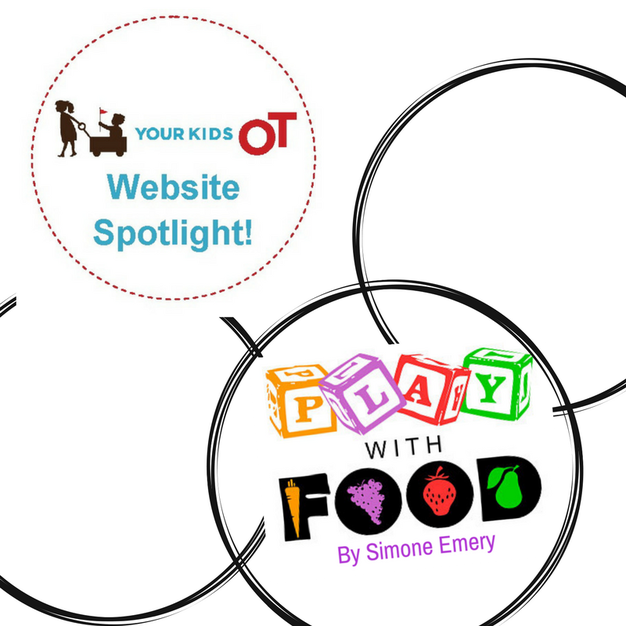



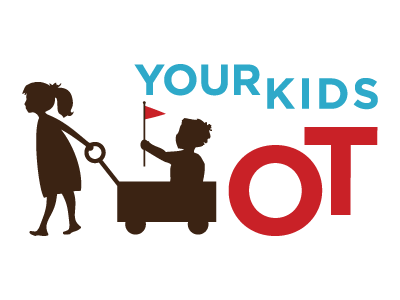

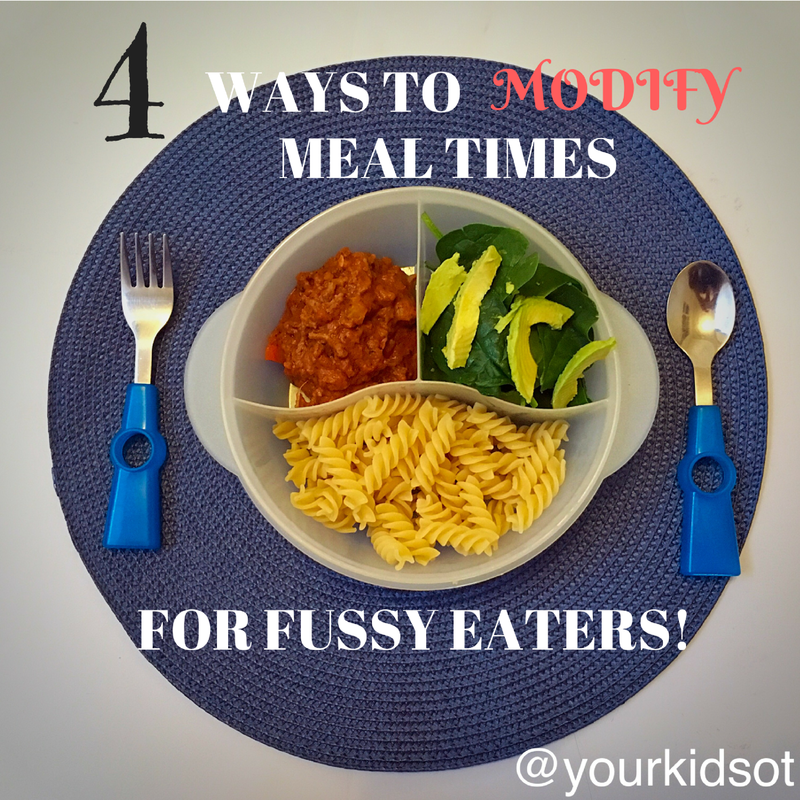
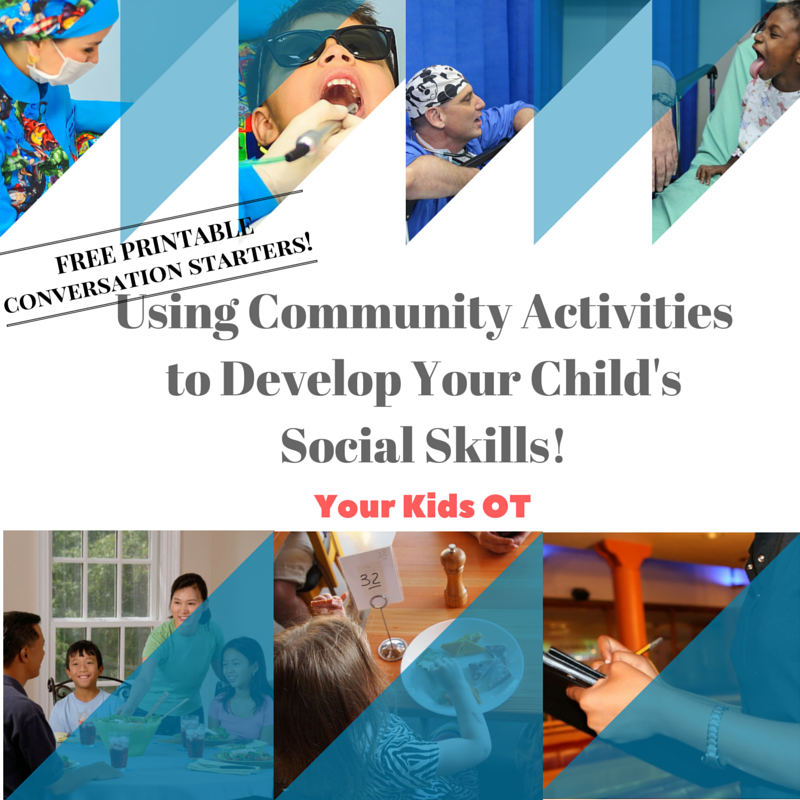
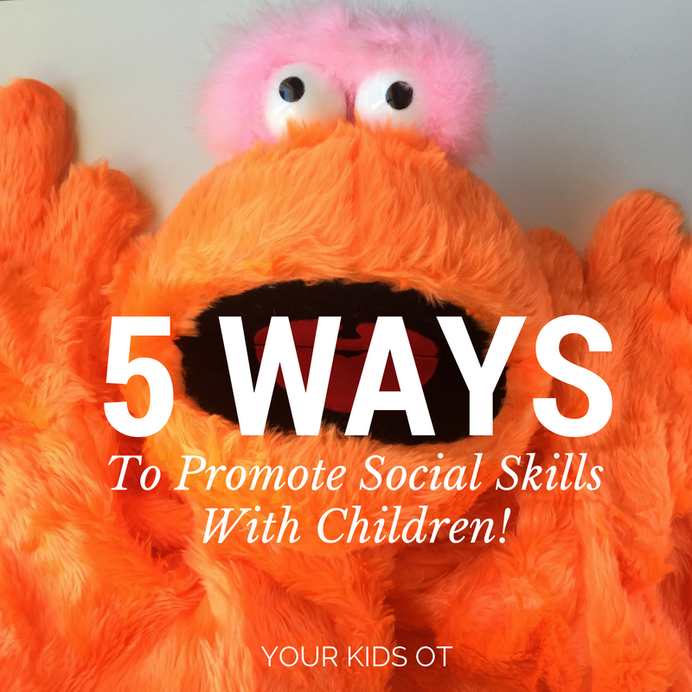
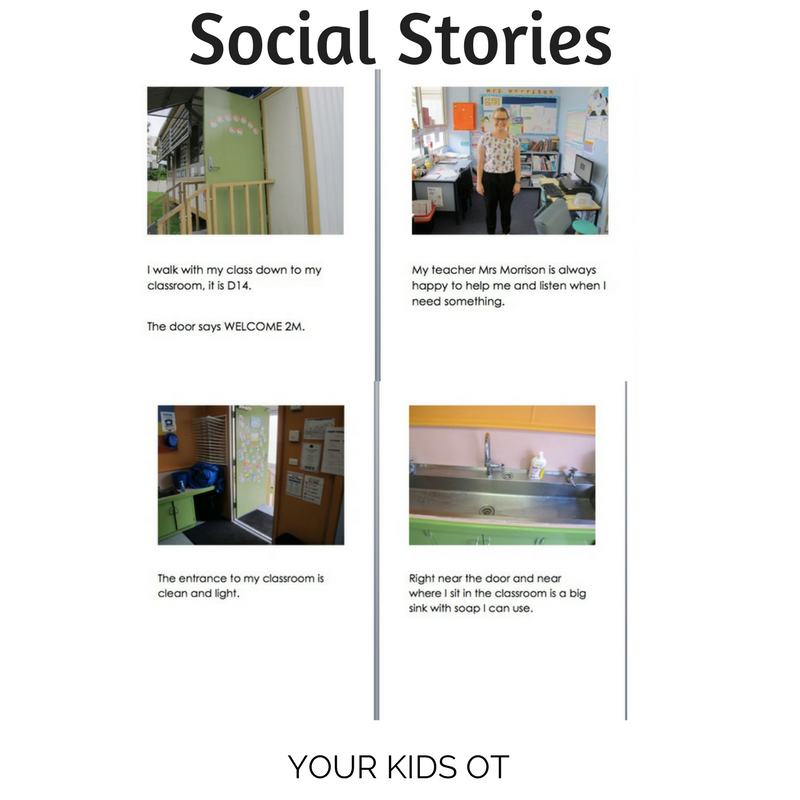
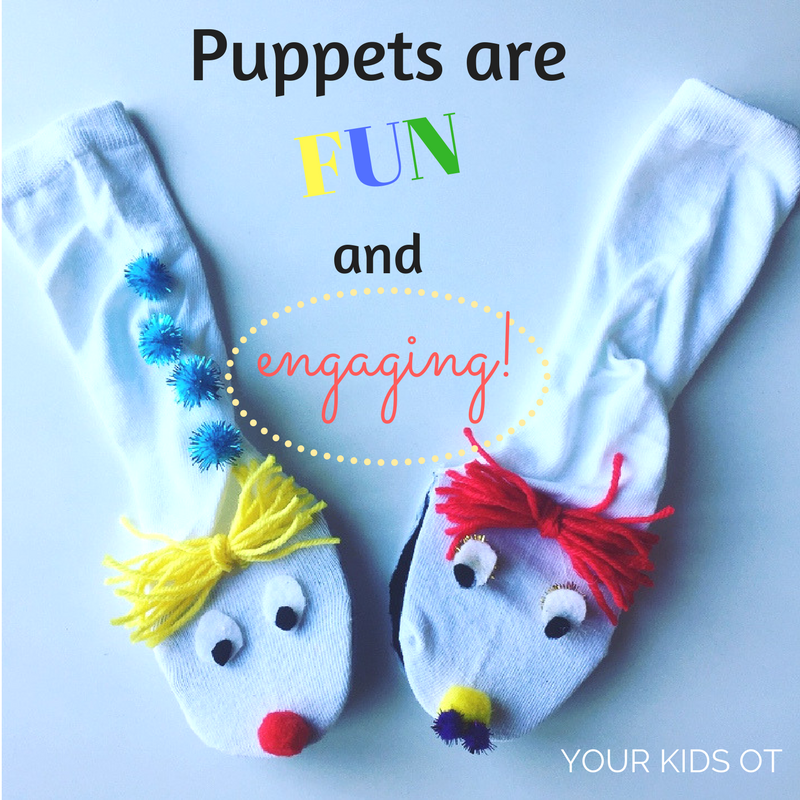

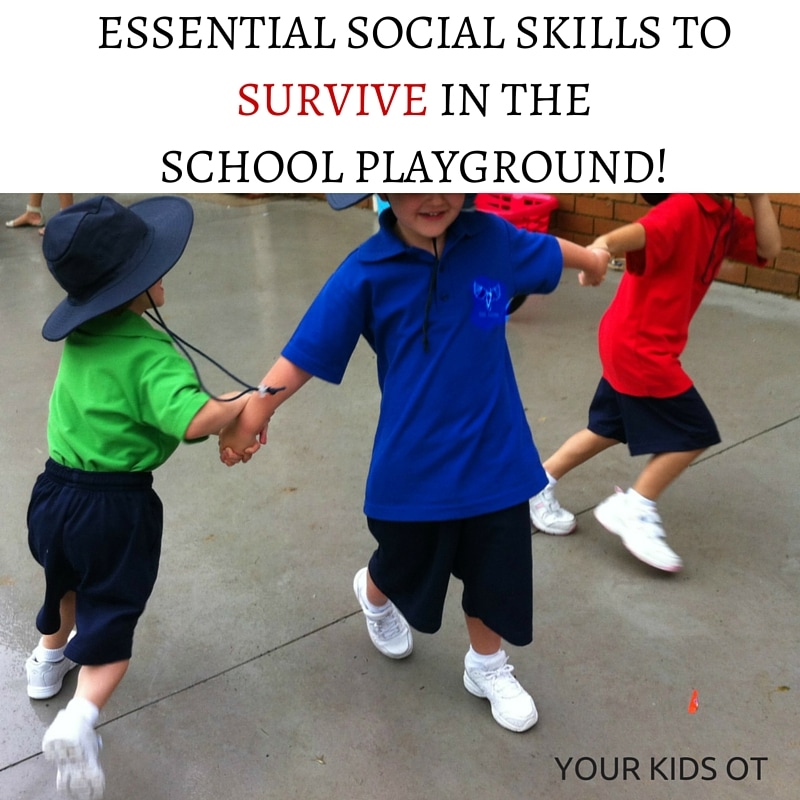
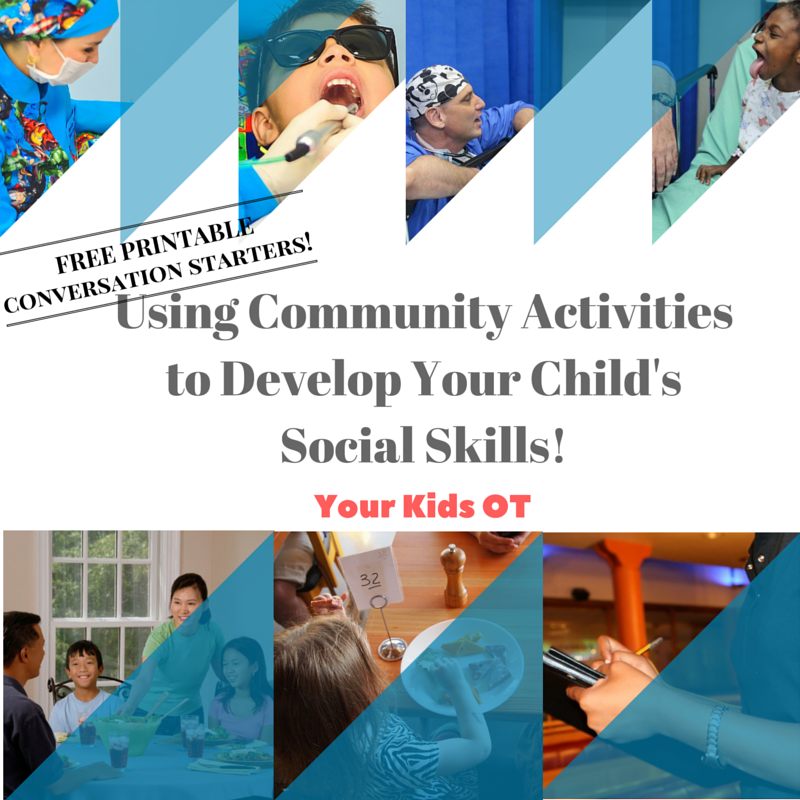

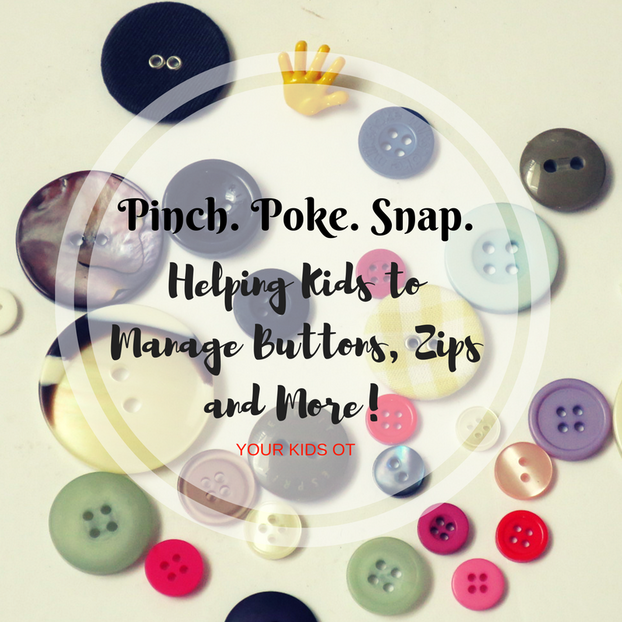
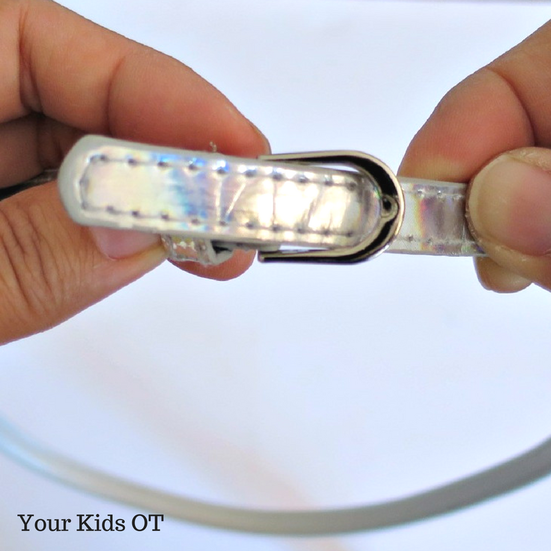
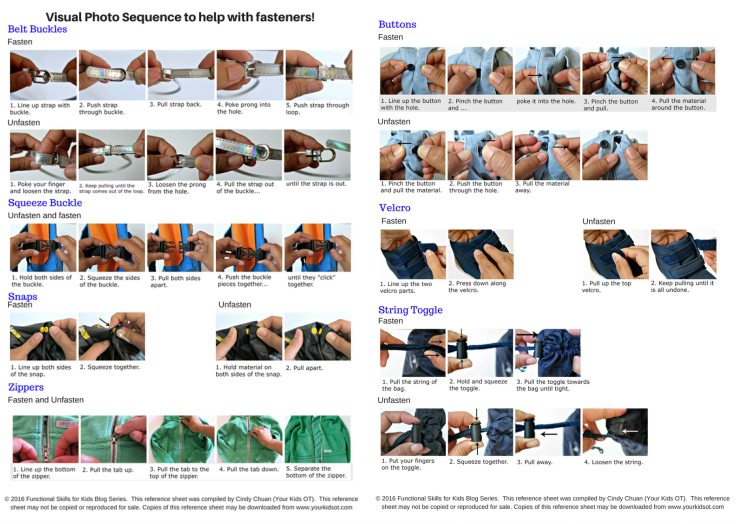
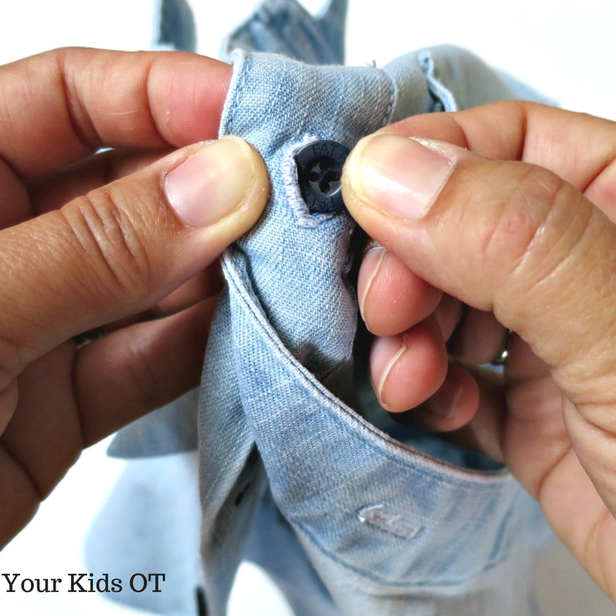

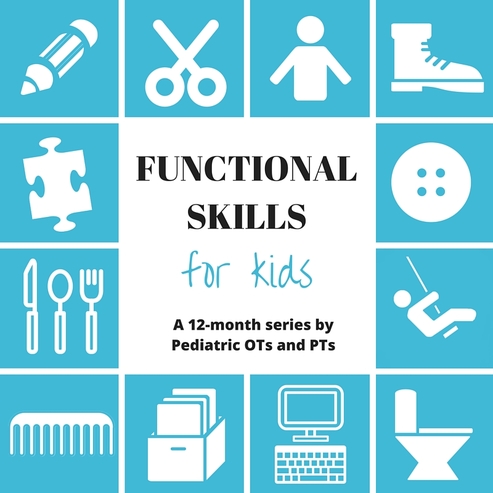

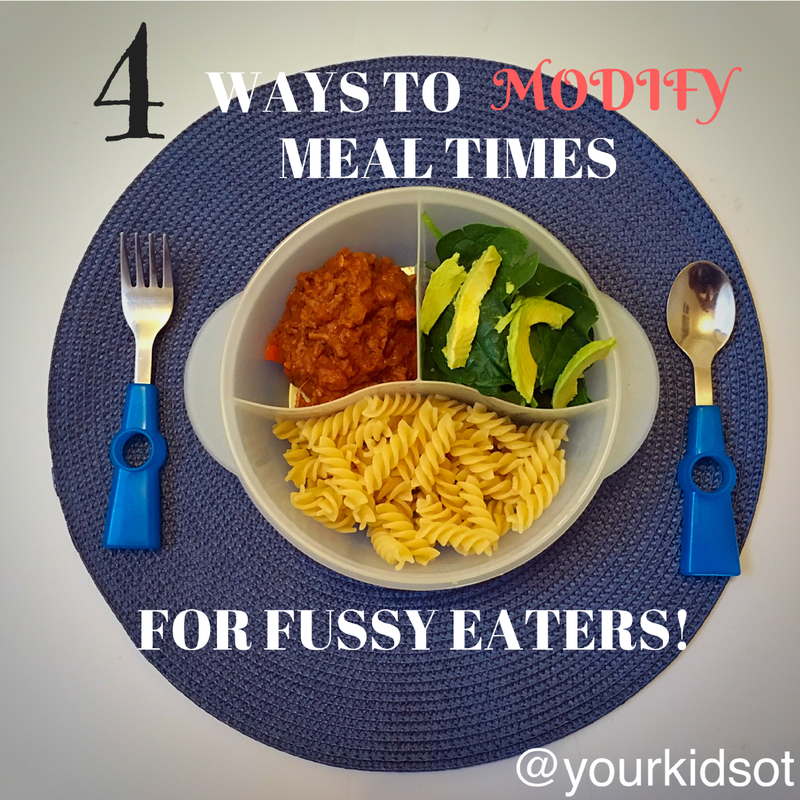
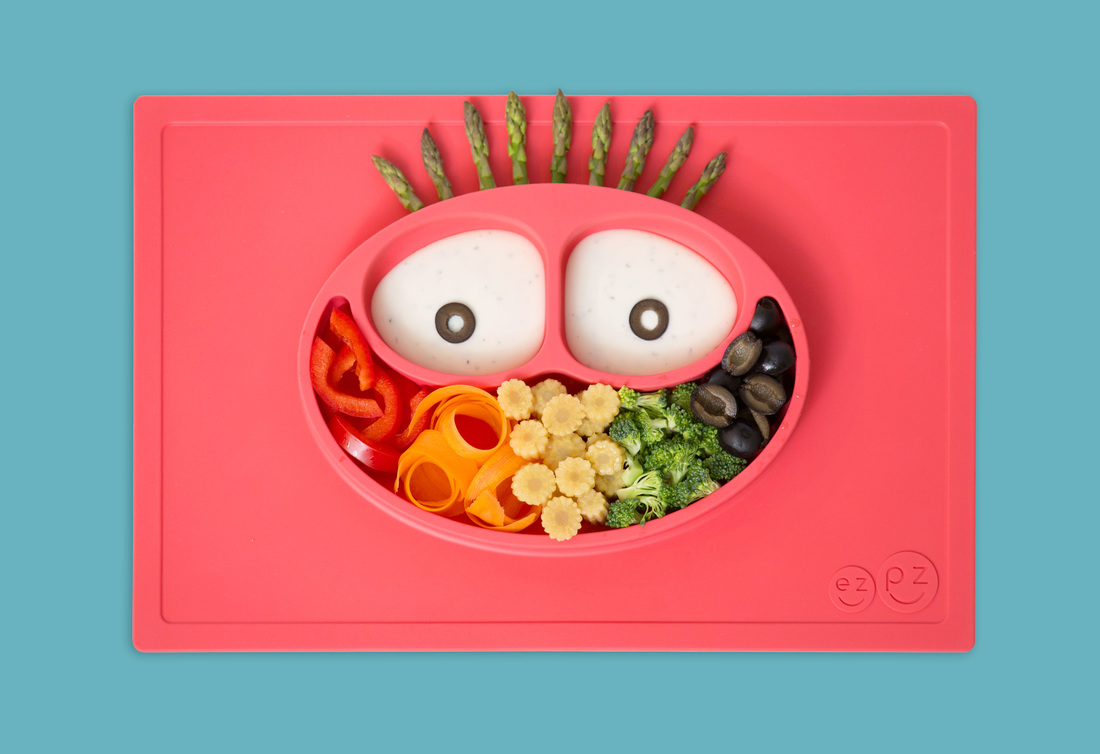
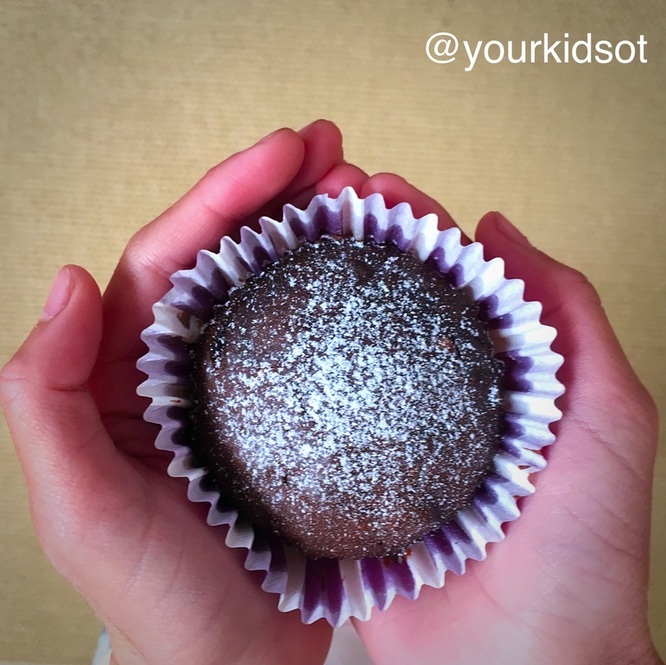

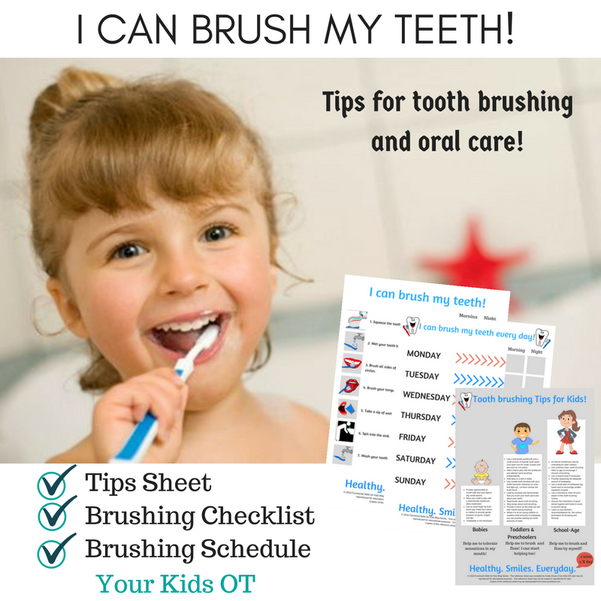
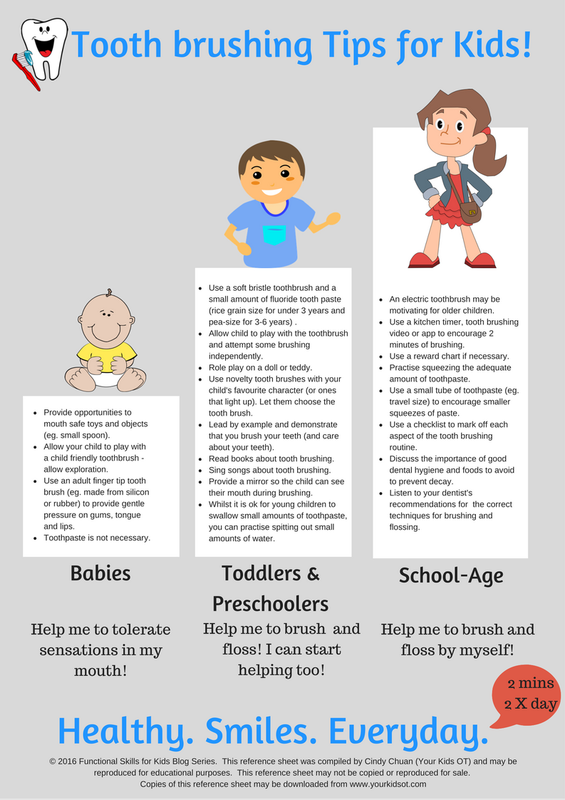
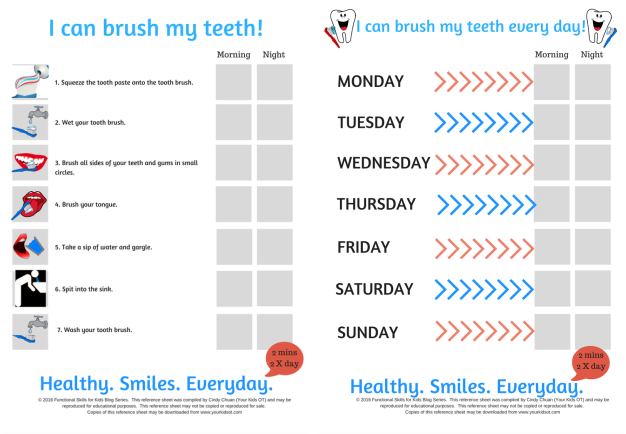

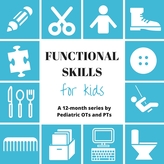

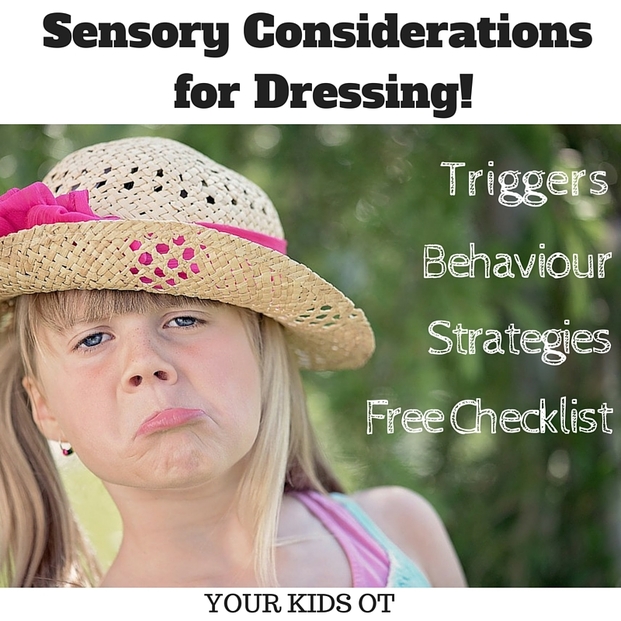


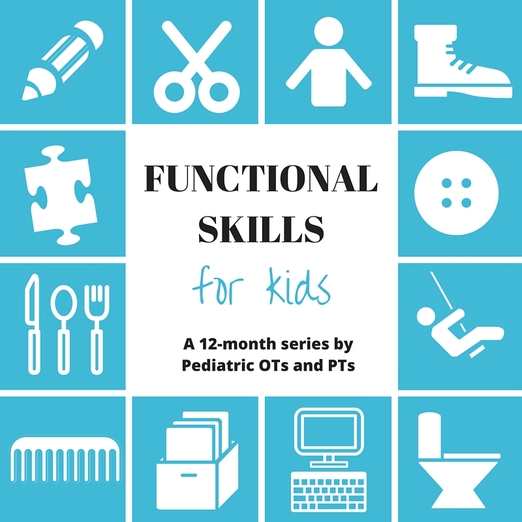

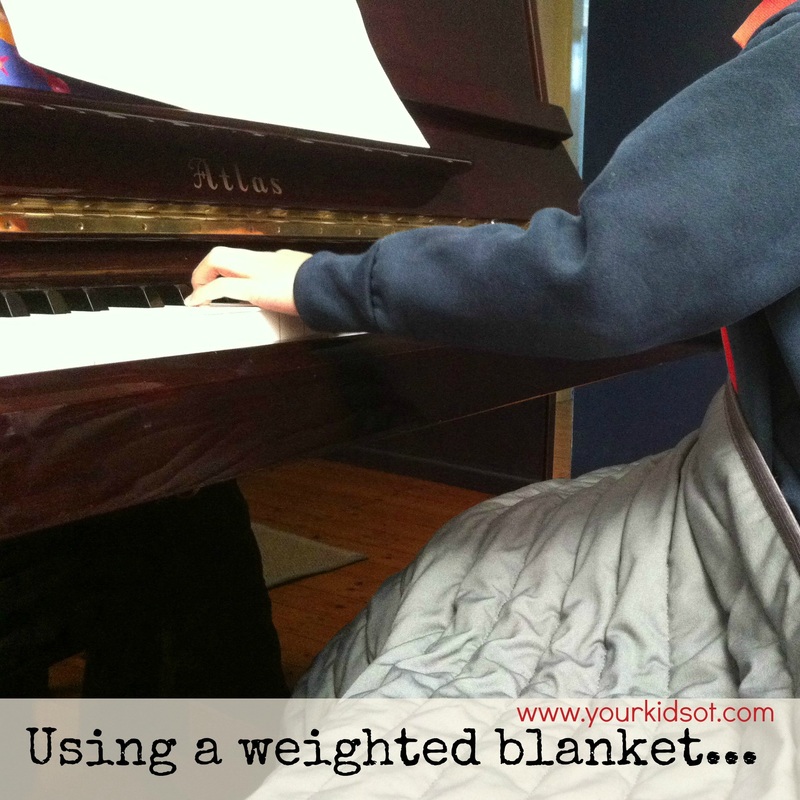
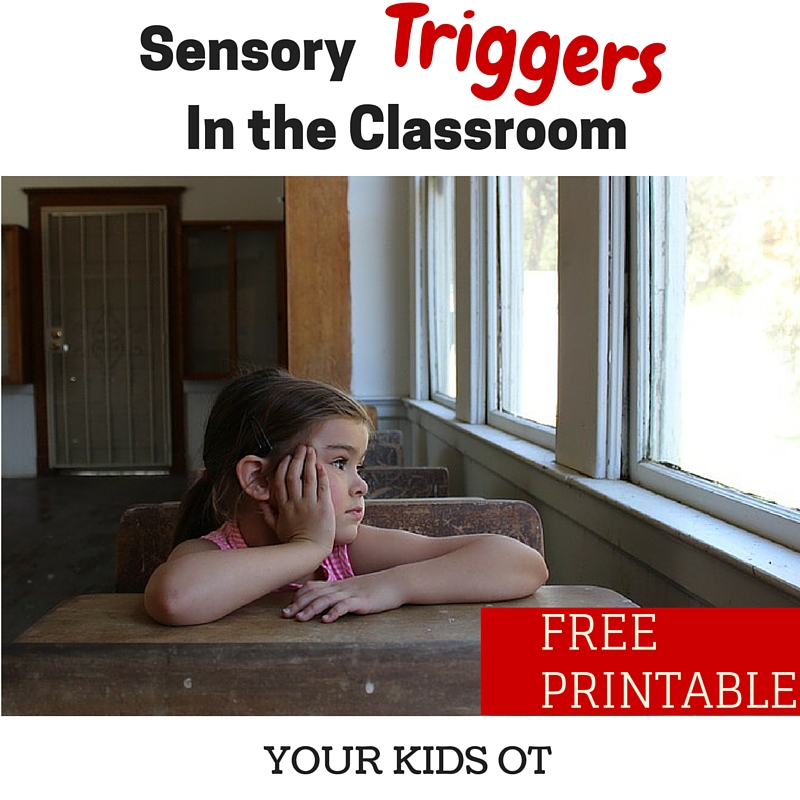
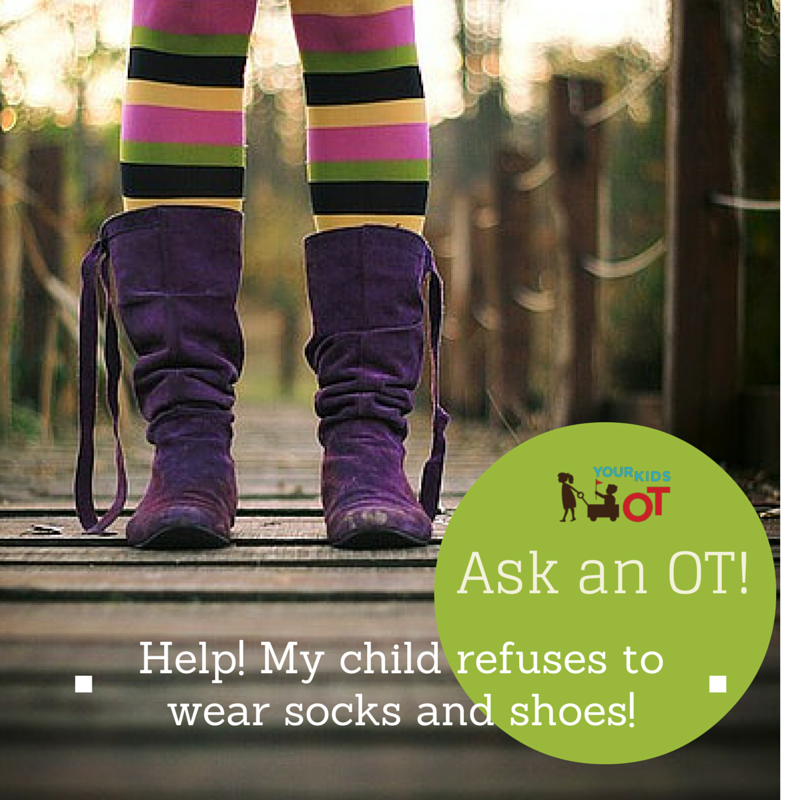
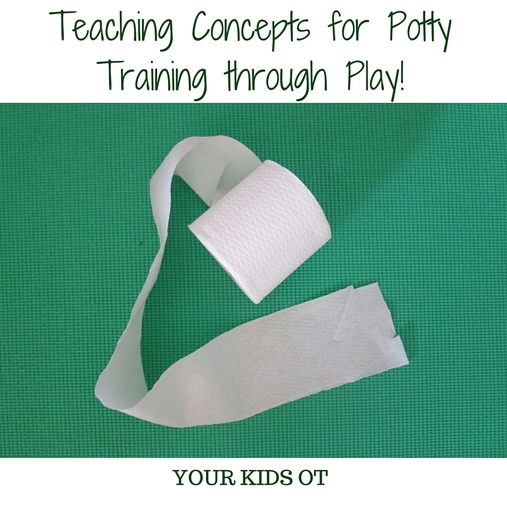

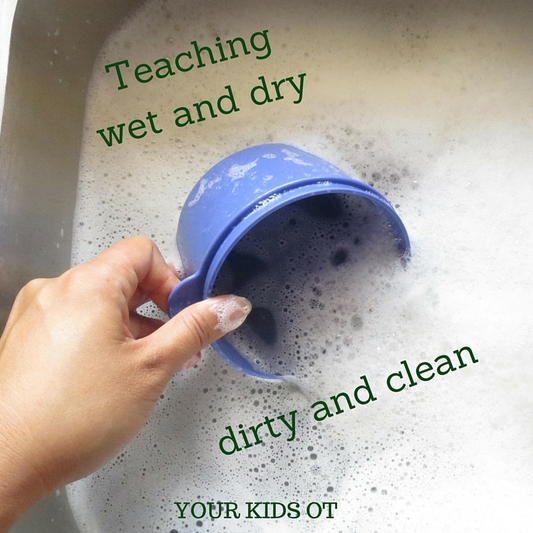
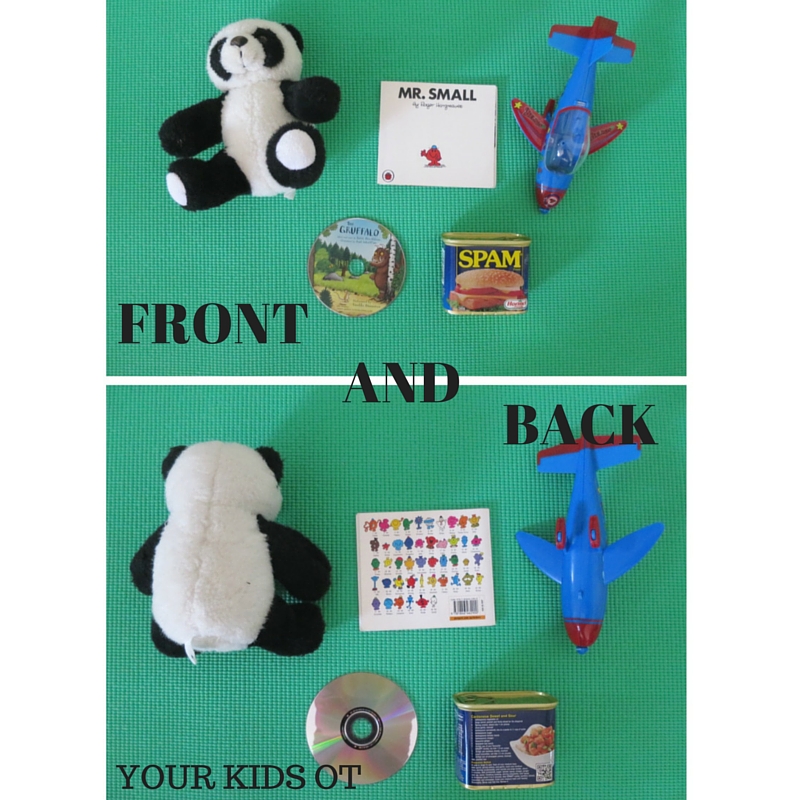
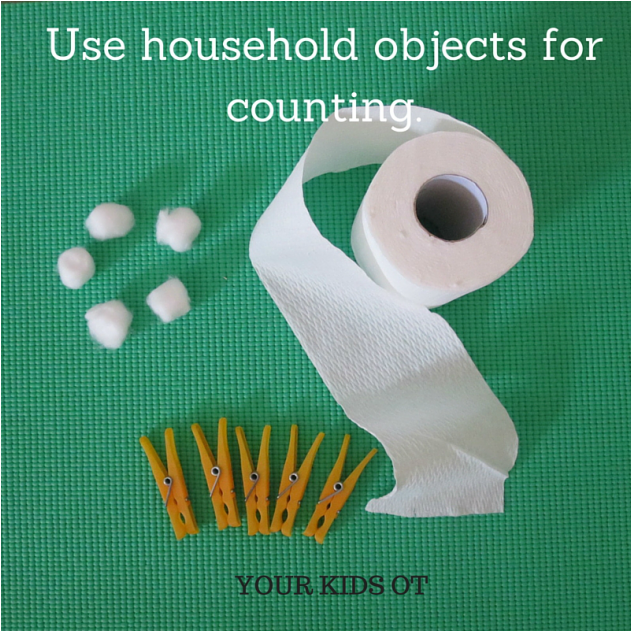
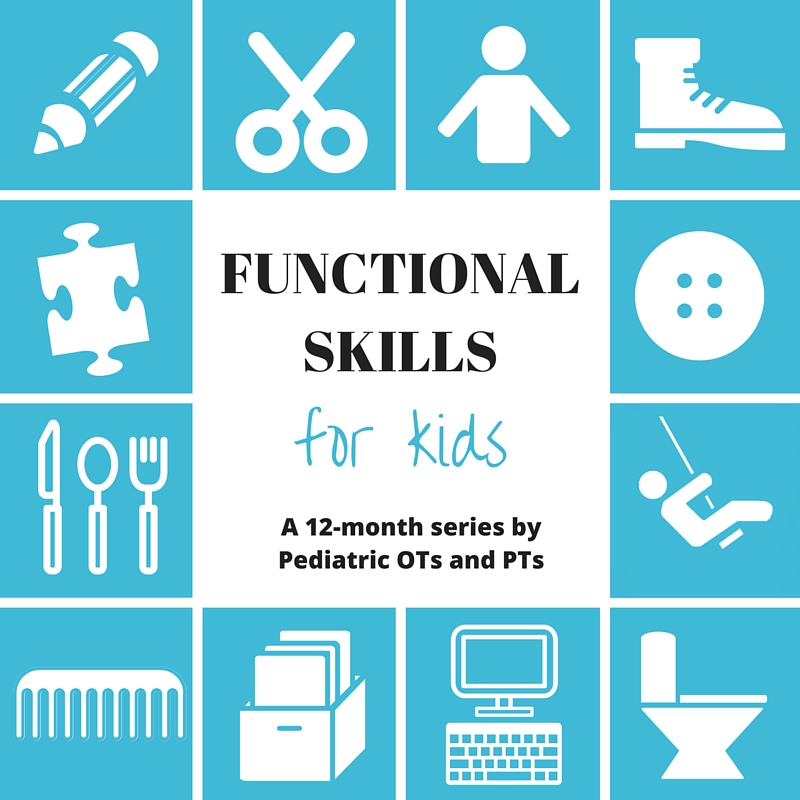

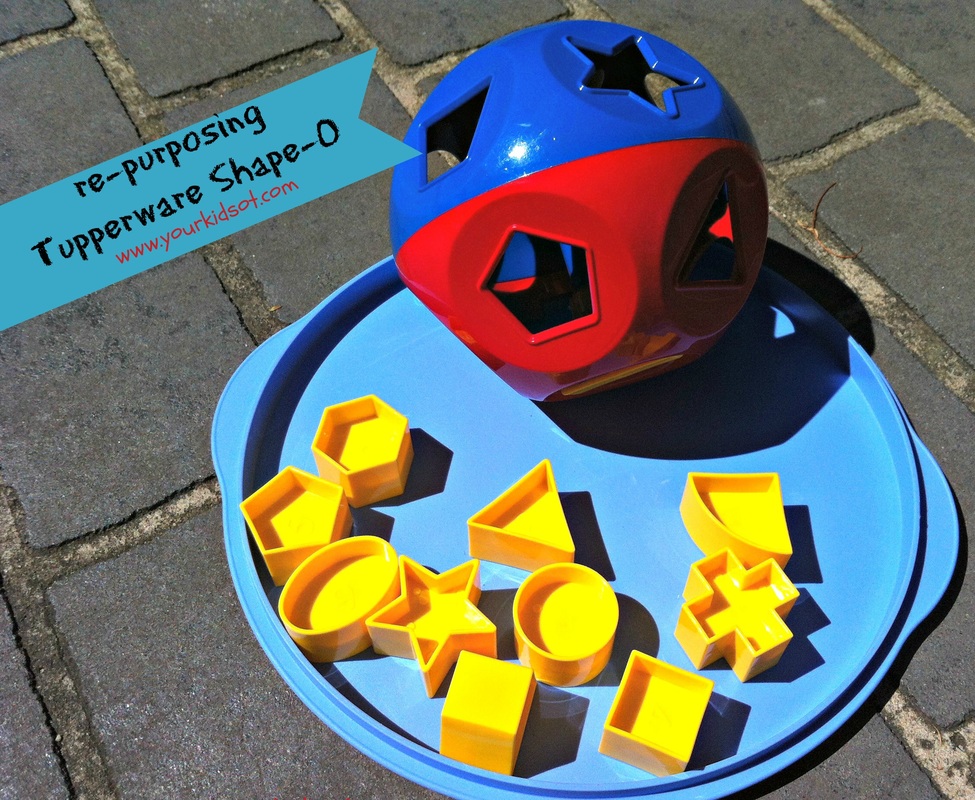
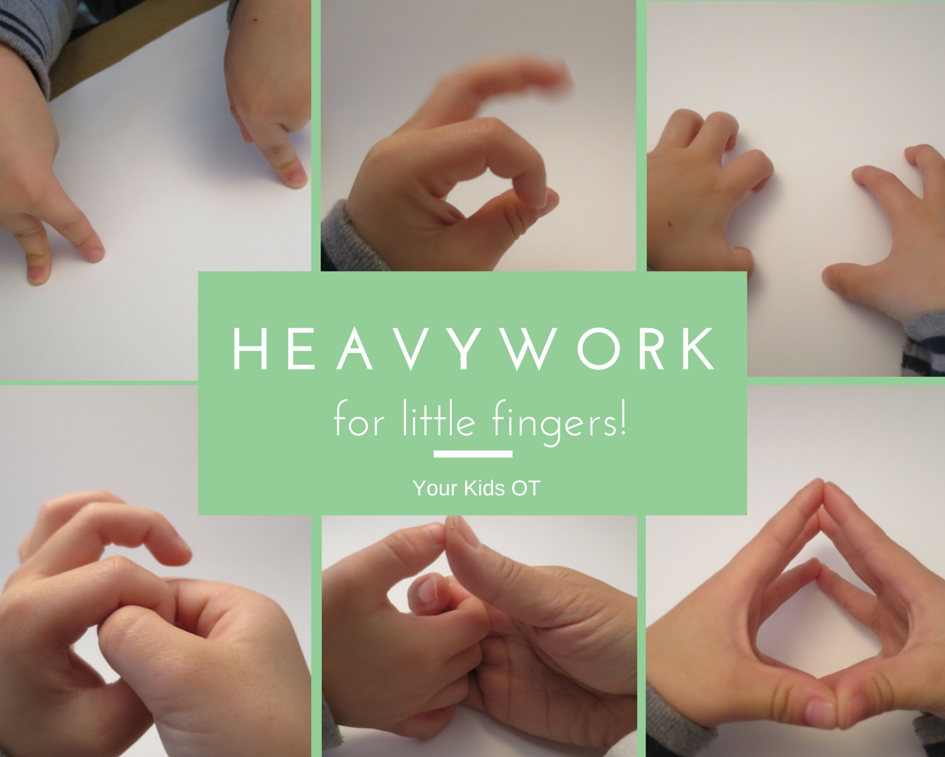

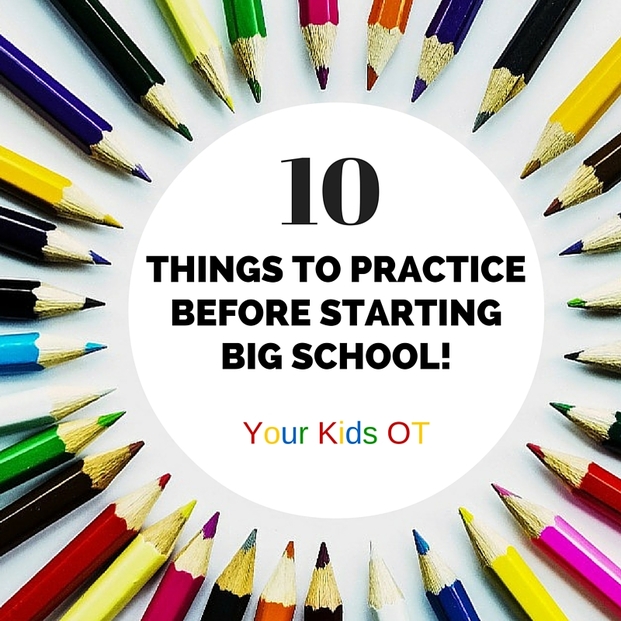

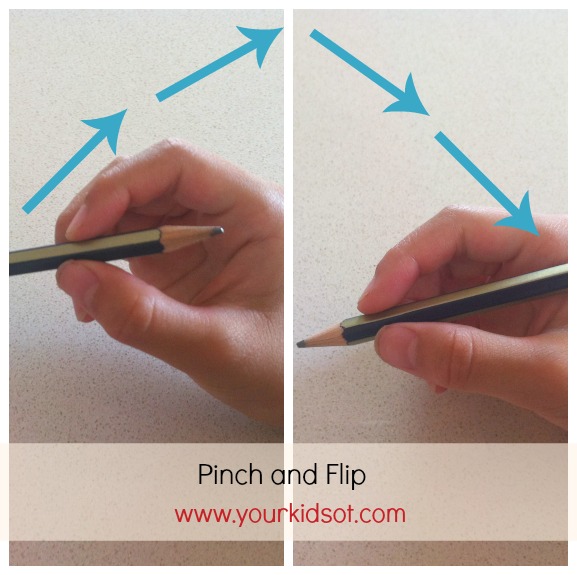
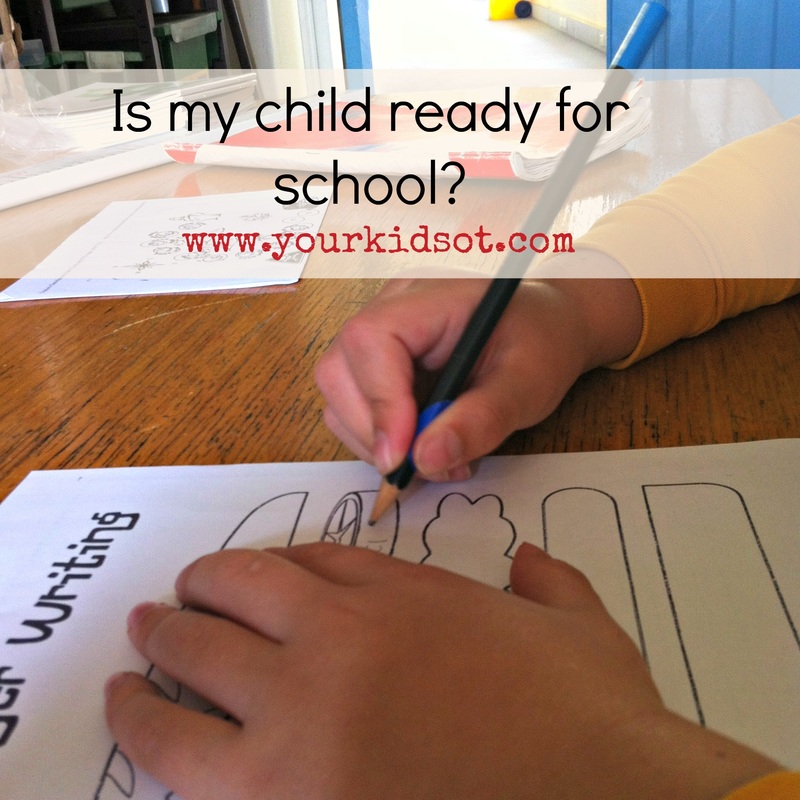
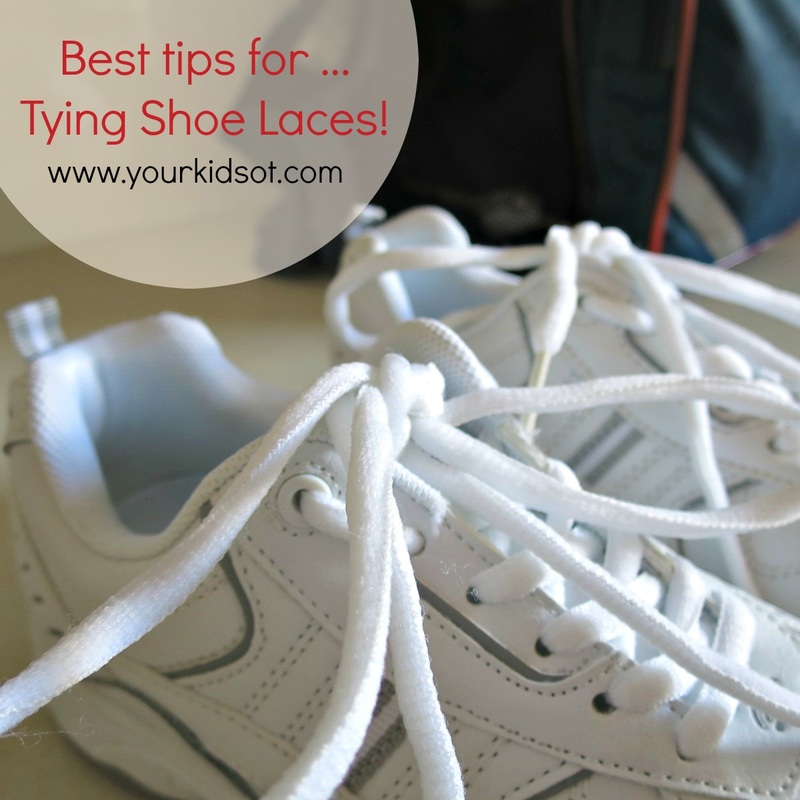
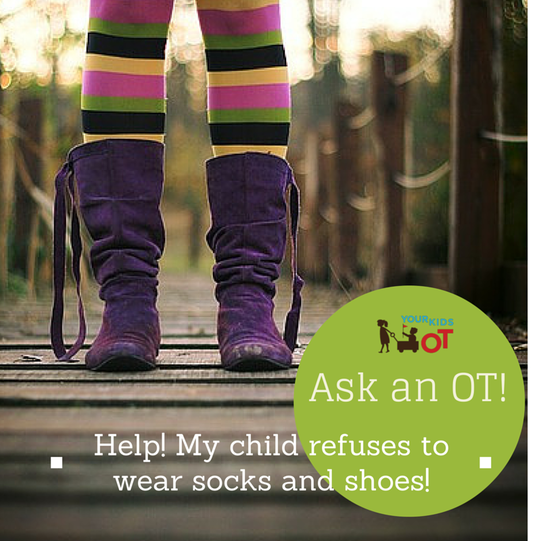
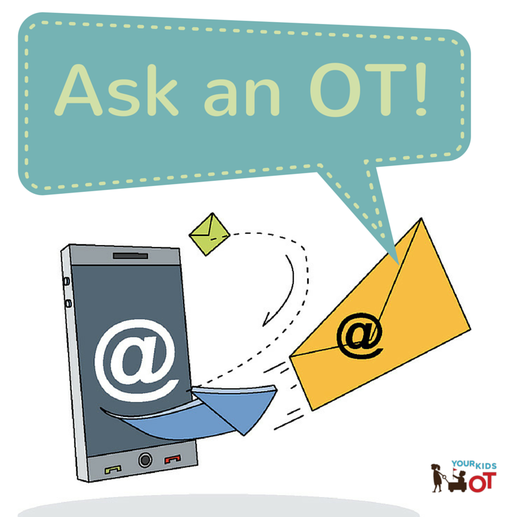

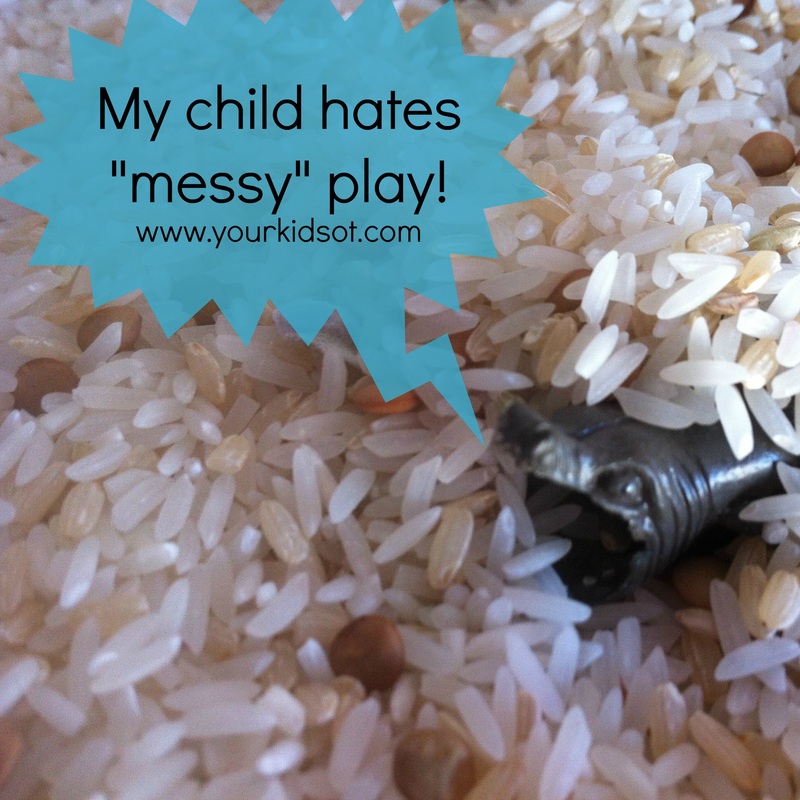
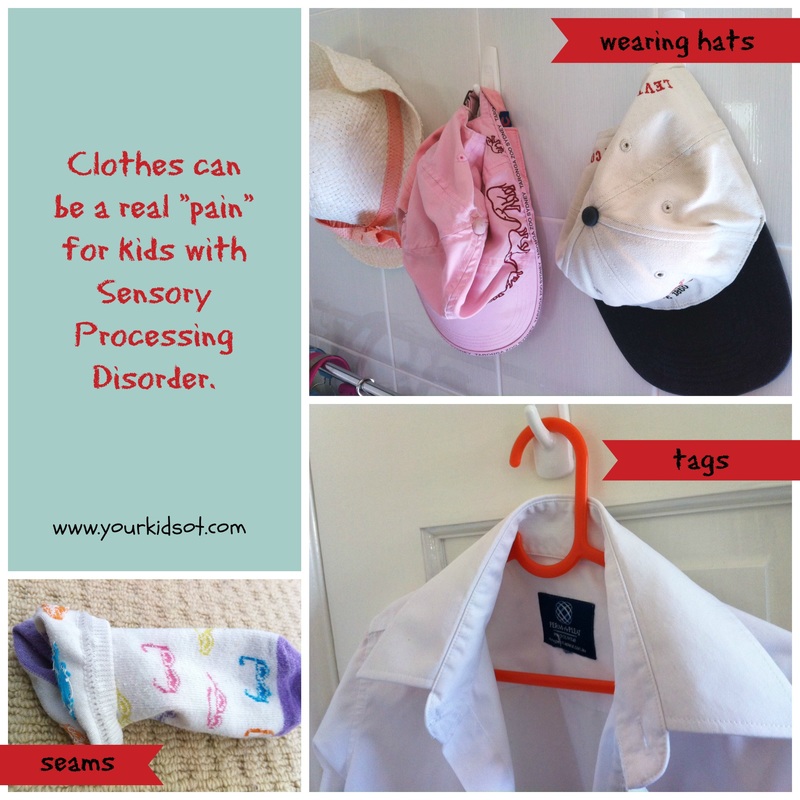

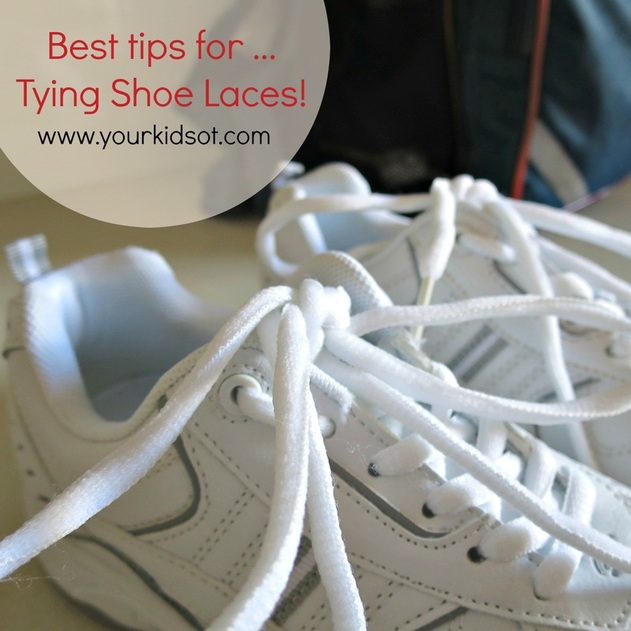
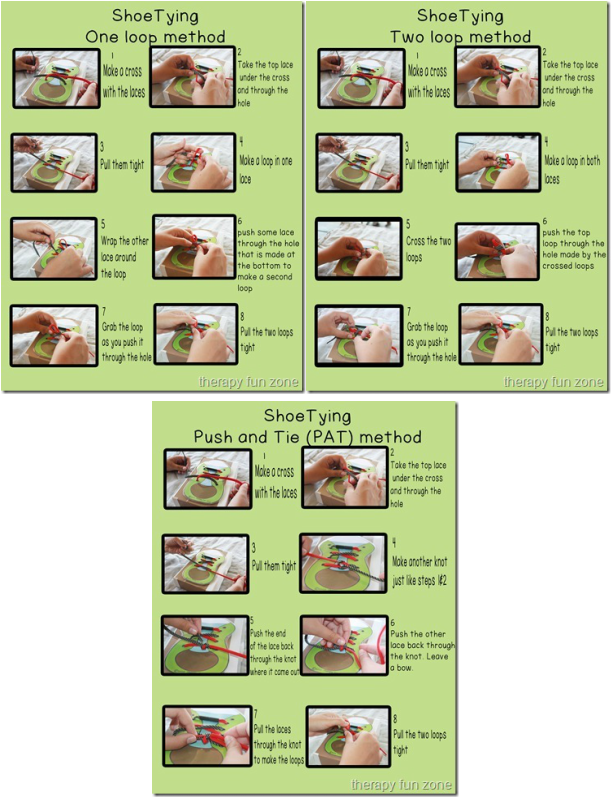
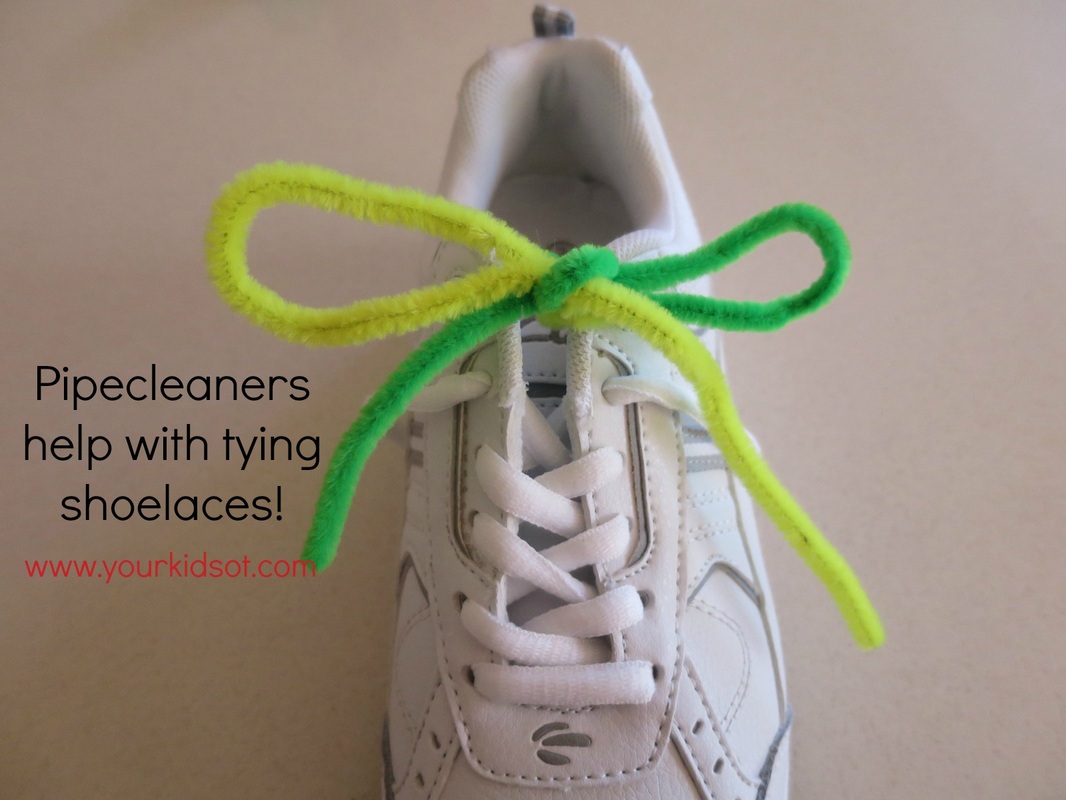
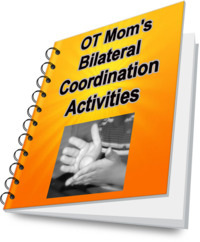

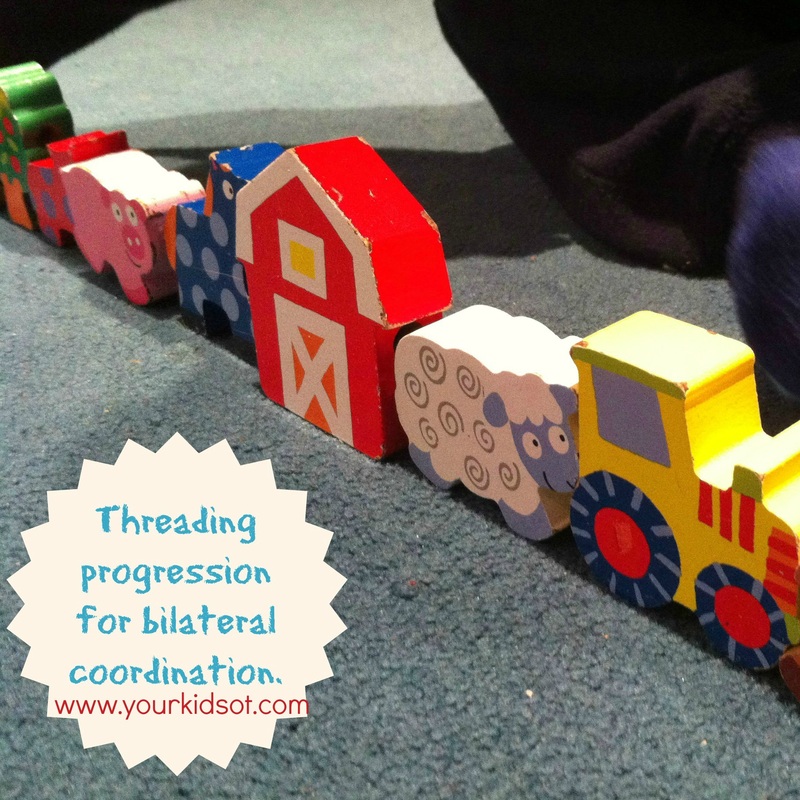

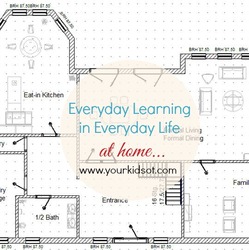
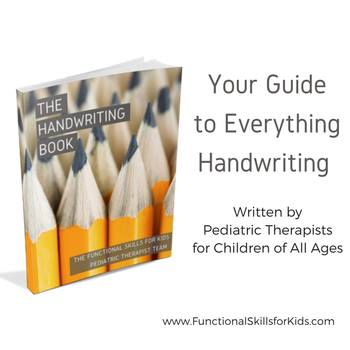

 RSS Feed
RSS Feed
